7.1: Deviance
7.1.1: Deviance
Deviance refers to behaviors that violate social norms.
Learning Objective
Define deviance and explain the nature of deviant behavior
Key Points
- Deviant behavior may violate formally-enacted rules or informal social norms.
- Formal deviance includes criminal violation of formally-enacted laws. Examples of formal deviance include robbery, theft, rape, murder, and assault.
- Informal deviance refers to violations of informal social norms, which are norms that have not been codified into law. Examples of informal deviance include picking one’s nose, belching loudly, or standing unnecessarily close to another person.
- Deviance can vary dramatically across cultures. Cultural norms are relative, which makes deviant behavior relative as well.
Key Terms
- deviance
-
Actions or behaviors that violate formal and informal cultural norms, such as laws or the norm that discourages public nose-picking.
- Formal Deviance
-
Deviance, in a sociological context, describes actions or behaviors that violate social norms, including formally-enacted rules (e.g., crime), as well as informal violations of social norms (e.g., rejecting folkways and mores).
- Informal Deviance
-
Deviance, in a sociological context, describes actions or behaviors that violate social norms, including formally-enacted rules (e.g., crime), as well as informal violations of social norms (e.g., rejecting folkways and mores).
Example
- Dr. Karen Halnon of Pennsylvania State University studies informal deviance and focuses on what she calls “deviance vacations,” whereby people of a certain socioeconomic status voluntarily enter another, usually lower, social strata. An example is heterosexual white males who become drag queens weekends. This practice represents a luxury, as heterosexual white males can afford to temporarily assume this different identity, knowing that they can return to the comforts of their regular socioeconomic status.
Deviance, in a sociological context, describes actions or behaviors that violate informal social norms or formally-enacted rules. Among those who study social norms and their relation to deviance are sociologists, psychologists, psychiatrists, and criminologists, all of whom investigate how norms change and are enforced over time.
Deviance is often divided into two types of activities. The first, crime, is the violation of formally enacted laws and is referred to as formal deviance. Examples of formal deviance include robbery, theft, rape, murder, and assault. The second type of deviant behavior involves violations of informal social norms (norms that have not been codified into law) and is referred to as informal deviance. Examples of informal deviance include picking one’s nose, belching loudly, or standing unnecessarily close to another person.
Deviance can vary dramatically across cultures. Cultural norms are relative, which makes deviant behavior relative as well. For instance, in the United States, Americans do not generally impose time-based restrictions on speech. However, in the Christ Desert Monastery, specific rules govern determine when residents can and cannot speak, and speech is banned between 7:30 pm and 4:00 am. These rules are one example of how norms vary across cultures.
Current sociological research on deviance takes many forms. For example, Dr. Karen Halnon of Pennsylvania State University studies informal deviance and focuses on what she calls “deviance vacations,” whereby people of a given socioeconomic status voluntarily enter a different, often lower, social strata. One example involves heterosexual white males who become drag queens on weekends. This behavior represents a luxury, because heterosexual white males can afford to make a temporarily shift, knowing that they may subsequently return to the comforts of their prevailing socioeconomic status. Other examples include performers who may affect deviant behaviors in order to gain credibility with an aim to increasing commercial profits.

Merton’s Social Strain Theory
This diagram depicts Robert K. Merton’s Social Strain Theory.
7.1.2: Norms and Sanctions
Norms are social rules of behavior, and a sanction is a form of punishment against violation of different norms.
Key Points
- Deviance, or the violations of social norms, can be easier to identify than the norm itself. For this reason, deviance frequently provides a tool to learn about norms.
- Norms and deviance always depend on the culture in which they exist.To study norms and deviance, one must contextualize the action, or consider the action in light of all of the circumstances surrounding it.
- Norms can be formal, as in the case of laws, or informal, as in the case of codes of etiquette. Formal deviance results in legal sanctions, such as fines or prison, while informal deviance results in social sanctions or stigma.
- The violation of a folkway leads to the development of a preference rather than stigmatization. When a more is violated, on the other hand, it results in a more serious degree of social sanction.
- Informal deviance, or violation of unwritten, social rules of behavior, results in social sanction, or stigma.
- A folkway leads to the development of a preference rather than stigmatization.
- When a more is violated, it results in a more serious degree of social sanction.
Key Terms
- More
-
A way to refer to norms that are widely observed and have great moral significance. Mores include an aversion for societal taboos, such as incest or pederasty.
- stigma
-
A mark of infamy or disgrace.
- folkway
-
A custom or belief common to members of a society or culture.
Example
- While society might deem it preferable to show up to most job interviews wearing a suit rather than casual attire, you will likely not be out of the running for the job for wearing khakis rather than a suit. However, should you show up nude to most interviews, you would likely be stigmatized for your behavior, given that it was such a drastic departure from the norm.
Norms are the social rules that govern behavior in a community. Norms can be explicit (such as laws) or implicit (such as codes of polite behavior). Norms can be difficult to identify because they are so deeply instilled in members of a given society. Norms are learned by growing up in a particular culture and can be difficult to learn if one does not grow up in the same social milieu.
The act of violating a social norm is called deviance. Individuals usually have a much easier time identifying the transgression of norms than the norms themselves. For example, few Americans would think to tell a sociologist that it is a social norm to hold the door open for a fellow pedestrian entering a building if within a particular distance. However, someone might remark that another person is rude because he or she did not hold the door open. Studying norms and studying deviance are inseparable endeavors.
Like deviance, norms are always culturally contingent. To study norms and deviance, one must contextualize the action, or consider the action in light of all of the circumstances surrounding it. For example, one cannot merely say that showing up nude to a job interview is a violation of social norms. While it is usually social convention to show up in some manner of (usually professional) dress to a job interview, this is most likely not the case for someone interviewing to be a nude model. To understand the norm, one must understand the context.
The violation of social norms, or deviance, results in social sanction. Different degrees of violation result in different degrees of sanction. There are three main forms of social sanction for deviance: 1) legal sanction, 2) stigmatization, and 3) preference for one behavior over another. Formal deviance, or the violation of legal codes, results in criminal action initiated by the state. Informal deviance, or violation of unwritten, social rules of behavior, results in social sanction, or stigma. Lesser degrees of social violation result in preference rather than stigmatization. While society might deem it preferable to show up to most job interviews wearing a suit rather than casual attire, you will likely not be out of the running for the job if you are wearing khakis rather than a suit. However, should you show up nude to most interviews, you would likely be stigmatized for your behavior, since it would be such a drastic departure from the norm.
We say that the norm that governs wearing professional rather than casual attire to a job interview is a folkway because its violation results in lesser degree of social sanction—the development of a preference rather than stigmatization. The norm that governs wearing clothing to most job interviews, rather than showing up nude, is a more because its violation results in a more serious degree of social sanction.
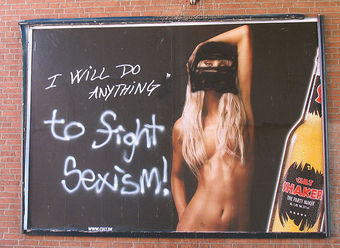
Misogyny in Billboards
This billboard has been defaced in order to highlight the sexual norms behind the advertisement.
7.1.3: Deviance and Social Stigma
Social stigma in deviance is the disapproval of a person because they do not fit the require social norms that are given in society.
Learning Objective
Describe the meaning of stigma through the work of two sociologists
Key Points
- Social stigma is severe social disapproval of a person because of a particular trait that indicates their deviance from social norms.
- Émile Durkheim, one of the founders of the social sciences, began to address the social marking of deviance in the late nineteenth century.
- Erving Goffman presented the fundamentals of stigma as a social theory, including his interpretation of “stigma” as a means of spoiling identity. By this, he referred to the stigmatized trait’s ability to “spoil” recognition of the individual’s adherence to social norms in other facets of self.
- Without a society, one cannot have stigma. To have stigma, one must have a stigmatizer and someone who is stigmatized. As such, this is a dynamic and social relationship.
Key Terms
- deviance
-
Actions or behaviors that violate formal and informal cultural norms, such as laws or the norm that discourages public nose-picking.
- stigma
-
A mark of infamy or disgrace.
- stigmatized
-
Subject to a stigma; marked as an outcast.
Examples
- Given that stigma is a social relationship, the phenomenon places emphasis not on the existence of deviant traits, but the perception and marking of certain traits as deviant by a second party. For example, theorists of stigma care little about whether or not Emily has a psychiatric diagnosis, but rather how Sally perceives Emily’s psychiatric diagnosis and subsequently treats Emily differently.
- 2) Given that stigma is a social relationship, the phenomenon places emphasis not on the existence of deviant traits, but the perception and marking of certain traits as deviant by a second party. For example, theorists of stigma care little about whether Emily has a psychiatric diagnosis, but rather how Sally perceives Emily’s psychiatric diagnosis and subsequently treats Emily differently.
Social stigma is the extreme disapproval of an individual based on social characteristics that are perceived to distinguish them from other members of a society. Social stigma is so profound that it overpowers positive social feedback regarding the way in which the same individual adheres to other social norms. For example, Terry might be stigmatized because she has a limp. Stigma attaches to Terry because of her limp, overpowering the ways in which Terry might be social normative–perhaps she is a white, Protestant, or a heterosexual female with a limp. The limp marks Terry, despite her other traits.
Stigma plays a primary role in sociological theory. Émile Durkheim, one of the founders of the social sciences, began to address the social marking of deviance in the late nineteenth century. Erving Goffman, an American sociologist, is responsible for bringing the term and theory of stigma into the main social theoretical fold. In his work, Goffman presented the fundamentals of stigma as a social theory, including his interpretation of “stigma” as a means of spoiling identity. By this, he referred to the stigmatized trait’s ability to “spoil” recognition of the individual’s adherence to social norms in other facets of self. Goffman identified three main types of stigma: (1) stigma associated with mental illness; (2) stigma associated with physical deformation; and (3) stigma attached to identification with a particular race, ethnicity, religion, ideology, etc.
While Goffman is responsible for the seminal texts in stigma theory, stigmatization is still a popular theme in contemporary sociological research. In Conceptualizing Stigma (2001), sociologists Jo Phelan and Bruce Link interpret stigma as the convergence of four different factors: (1) differentiation and labeling of various segments of society; (2) linking the labeling of different social demographics to prejudices about these individuals; (3) the development of an us-versus-them ethic; and (4) disadvantaging the people who are labeled and placed in the “them” category.
Ultimately, stigma is about social control. A corollary to this is that stigma is necessarily a social phenomenon. Without a society, one cannot have stigma. To have stigma, one must have a stigmatizer and someone who is stigmatized. As such, this is a dynamic and social relationship. Given that stigmas arise from social relationships, the theory places emphasis, not on the existence of deviant traits, but on the perception and marking of certain traits as deviant by a second party. For example, theorists of stigma care little about whether Emily has a psychiatric diagnosis, but rather on how Sally perceives Emily’s psychiatric diagnosis and, subsequently, treats Emily differently. Stigma depends on a another individual perceiving and knowing about the stigmatized trait. As stigma is necessarily a social relation, it is necessarily imbued with relations of power. Stigma works to control deviant members of the population and encourage conformity.
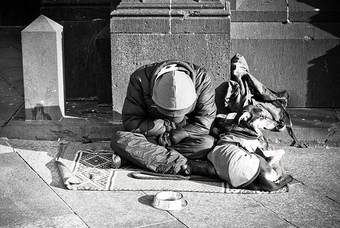
The Stigmatization of Homeless People
Homeless people are regularly stigmatized by society for being unemployed while living in the streets.
7.1.4: Deviance and Technology
Advances in technology have resulted in new forms of deviance as well as new forms of control.
Learning Objective
Discuss the impact of technological innovation on forms of deviance and social control
Key Points
- Cyberloafing refers to the use of high-speed internet by employees for personal use instead of work-related purposes.
- Production deviance refers to the behaviors of deviant employees that have a negative impact on the overall productivity of the organization.
- Property deviance refers to cases in which workers damage an employer’s property without authorization.
- Property deviance typically involves theft, but it may include sabotage, intentional errors in work, and the misuse of expense accounts.
Key Terms
- Property Deviance
-
Property deviance is “where employees either damage or acquire tangible assets…without authorization”. This type of deviance typically involves theft but may include “sabotage, intentional errors in work, misusing expense accounts”, among other examples.
- cyberloafing
-
The use of computers by employees for purposes unrelated to work.
- sabotage
-
A deliberate action aimed at weakening an enemy through subversion, obstruction, disruption, and/or destruction.
Example
- In the United States, employees in offices are expected to productive and efficient, letting their minds wander off-task as little as possible. In the past decade, most companies have installed high-speed internet access as a means of improving efficiency. However, employees often reappropriate the internet access to avoid work by using social networking sites. Such procrastination and corporate inefficiency stemming from internet access is called “cyberloafing. “
As technology has opened up a new space for cyberculture, new forms of deviance and social control have appeared. Some individuals use technology as a means of deviating from more traditional cultural norms. For example, in the United States, employees in offices are encouraged to remain productive and efficient, letting their minds wander off-task as little as possible. In the past decade, most companies have installed high-speed internet access as a means of improving efficiency. However, employees often reappropriate the internet access to avoid work by using social networking sites. Such procrastination and corporate inefficiency stemming from internet access is called “cyberloafing. “
In addition to new forms of deviance in traditional cultural mores, new forms of deviance have arisen within cyberculture. New technologies result in new standards of how to engage with them. The behaviors of deviant employees ultimately have a negative impact on the overall productivity of an organization. For this reason, all of these behaviors are considered production deviance. More serious cases of deviant behavior involve property deviance. Property deviance refers to workers damaging an employer’s property without authorization. This type of deviance typically involves theft but may include sabotage, intentional errors in work, and the misuse of expense accounts.
Just as new forms of deviance have come about as a result of technological advances, so too have new means of controlling deviant populations. In reaction to cyberloafing, companies have developed new technologies to monitor employees’ computers and restrict social networking during the workday. These methods include installing proxy servers to prevent programs from accessing resources like Internet Relay Chat, AOL Instant Messenger, or online gambling services. Other practices include strict disciplinary measures for employees found cyberloafing, and carrot-and-stick measures, such as providing free or subsidized Internet access for employees outside of working hours. Technology is used in policing to monitor formal deviants and encourage conformity to the law and social norms.

Slacking and Snacking at Work
Misusing company resources to conduct personal business, such as online shopping.
7.1.5: The Functions of Deviance
Deviance provides society the boundaries to determine acceptable and unacceptable behaviors in society.
Learning Objective
Describe how structural functionalism views the relation between deviance and social change
Key Points
- Deviance provides the key to understanding the disruption and recalibration of society that occurs over time.
- Systems of deviance create norms and tell members of a given society how to behave by laying out patterns of acceptable and unacceptable behavior.
- Deviance allows for group majorities to unite around their worldview, often at the expense of those marked as deviant.
- Social parameters create boundaries between populations and lead to an us-versus-them mentality within various groups.
- Being marked as deviant can actually bolster solidarity within the marked community as members take pride and ownership in their stigmatized identity.
- Some traits will be stigmatized and can potentially cause social disruption. However, as traits become more mainstream, society will gradually adjust to incorporate the formerly stigmatized traits.
Key Term
- structural functionalism
-
The structural-functionalist approach to deviance argues that deviant behavior plays an important role in society by laying out patterns of what is acceptable and unacceptable. These social parameters create boundaries and enable an us-verus-them mentality.
Example
- As traits become more mainstream, society will gradually adjust to incorporate the formerly stigmatized traits. In urban America 50 years ago, homosexual behavior was considered deviant. On the one hand, society was divided into those marked as homosexuals and those unmarked (normative heterosexuals). While this us-versus-them mentality solidified social identities and solidarities within the two categories, there was nevertheless an overarching social schism. As time went on, homosexuality came to be accepted as more mainstream.
What function does the notion of deviance play in society? Sociologists who identify with the tradition of structural-functionalism ask this type of question. Structural functionalism has its roots embedded in the very origins of sociological thought and the development of sociology as a discipline. A structural functionalist approach emphasizes social solidarity and stability in social structures. Structural functionalists ask: How does any given social phenomenon contribute to social stability? This cannot be answered without addressing this question of deviance.
For the structural functionalist, deviance serves two primary roles in creating social stability. First, systems of deviance create norms and tell members of a given society how to behave by laying out patterns of acceptable and unacceptable behavior. In order to know how not to unsettle society, one must be aware of what behaviors are marked as deviant. Second, these social parameters create boundaries between populations and enable an us-versus-them mentality within various groups. Deviance allows for group majorities to unite around their worldview, at the expense of those marked as deviant. Conversely, being marked as deviant can actually bolster solidarity within the marked community as members take pride and ownership in their stigmatized identity, creating cohesive units of their own.
From a structural-functionalist perspective, then, how does society change, particularly in regards to establishing norms and deviant behaviors? Deviance provides the key to understanding the disruption and recalibration of society that occurs over time. Some traits will be stigmatized and can potentially cause social disruption. However, as traits become more mainstream, society will gradually adjust to incorporate the formerly stigmatized traits. Take, for example, homosexuality. In urban America 50 years ago, homosexual behavior was considered deviant. On the one hand, this fractured society into those marked as homosexuals and those unmarked (normative heterosexuals). While this us-versus-them mentality solidified social identities and solidarities within the two categories, there was nevertheless an overarching social schism. As time went on, homosexuality came to be accepted as more mainstream. Accordingly, what originally appears as a fracturing of society actually reinforces social stability by enabling mechanisms for social adjustment and development.
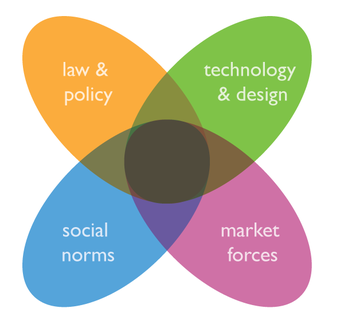
Four Mechanisms that Regulate Our Behavior
Our behavior in our everyday lives is regulated by social norms, law and policy, technology and design, and market forces.
7.2: Social Control
7.2.1: Social Control Theory
Social control theory argues that relationships, commitments, values, and beliefs encourage conformity.
Learning Objective
Differentiate between methods of social control
Key Points
- Internal means of control, such as an individual’s own sense of right and wrong, decrease the likelihood that one will deviate from social norms.
- Through external means of control, individuals conform because an authority figure threatens sanctions if the individual disobeys.
- Jackson Toby argued that individuals engaged in non-delinquent community activities felt as thought they had too much to lose by joining delinquent groups and, hence, had a “stake in conformity”.
- F. Ivan Nye argued that youth may be directly controlled through constraints imposed by parents, through limits on the opportunity for delinquency, and through parental rewards and punishments.
- Michel Foucault argues that the eighteenth century introduced a new form of power: discipline. Discipline is a power relation in which the subject is complicit. This is contrasted with the previous strategy of regulating bodies but not seeking complicity.
- Socialization refers to the lifelong process of inheriting, interpreting, and disseminating norms, customs, and ideologies.
Key Terms
- Discipline and Punish
-
Discipline and Punish: The Birth of the Prison is a 1975 book by the French philosopher Michel Foucault.
- socialization
-
The process of learning one’s culture and how to live within it.
- Social Control Theory
-
Social control theory proposes that people’s relationships, commitments, values, norms, and beliefs encourage them not to break the law. Thus, if moral codes are internalized and individuals are tied into, and have a stake in their wider community, they will voluntarily limit their propensity to commit deviant acts.
Example
- In 1957, Jackson Toby published an article entitled “Social Disorganization and Stake in Conformity: Complementary Factors in the Predatory Behavior of Hoodlums,” which discussed why adolescents were inclined or disinclined to engage in delinquent activities. Toby argued that individuals engaged in non-delinquent community activities felt as thought they had too much to lose by joining delinquent groups and, hence, had a “stake in conformity.”
Social control theory describes internal means of social control. It argues that relationships, commitments, values, and beliefs encourage conformity—if moral codes are internalized and individuals are tied into broader communities, individuals will voluntarily limit deviant acts. This interpretation suggests the power of internal means of control, such as one’s own conscious, ego, and sensibilities about right and wrong, are powerful in mitigating the likelihood that one will deviate from social norms. This stands in contrast to external means of control, in which individuals conform because an authority figure (such as the state) threatens sanctions should the individual disobey.
Social control theory seeks to understand how to reduce deviance. Ultimately, social control theory is Hobbesian; it presupposes that all choices are constrained by social relations and contracts between parties. Like Hobbes, adherents to social control theory suggest that morality is created within a social order by assigning costs and consequences to certain actions that are marked as evil, wrong, illegal, or deviant.
Jackson Toby
An internal understanding of means of control became articulated in sociological theory in the mid-twentieth century. In 1957, Jackson Toby published an article entitled “Social Disorganization and Stake in Conformity: Complementary Factors in the Predatory Behavior of Hoodlums,” which discussed why adolescents were inclined or disinclined to engage in delinquent activities. Toby argued that individuals engaged in non-delinquent community activities felt as thought they had too much to lose by joining delinquent groups and, hence, had a “stake in conformity.” The notion of an individual being shaped by his ties to his community, of having a “stake in conformity,” laid the groundwork for the idea of internalized norms that act as a method of social control.
F. Ivan Nye
Toby’s study was followed in 1958 by F. Ivan Nye’s book Family Relationships and Delinquent Behavior. Nye carried on the tradition of studying juvenile delinquency as a means of theorizing about deviance and social control. Nye conducted formal interviews of 780 young people in Washington State, though his sample was criticized for not including individuals from urban backgrounds and for only selecting individuals who were likely to describe their families unfavorably. Nye focused on the family unit as a source of control and specified three types of control: (1) direct control, or the use of punishments and rewards to incentivize particular behaviors; (2) indirect control, or the affectionate identification with individuals who adhere to social norms; and (3) internal control, or the manipulation of an individual’s conscience or sense of guilt to encourage conformity.
Youth may be directly controlled through constraints imposed by parents, through limits on the opportunity for delinquency, or through parental rewards and punishments. However, youth may be constrained when free from direct control by their anticipation of parental disapproval (indirect control), or through the development of a conscience, an internal constraint on behavior.
Michel Foucault
How do individuals develop a particular conscience that promotes social adherence? This is the question taken up by social theorist Michel Foucault in his 1975 seminal text, Discipline and Punish: The Birth of the Prison. Foucault argues that the eighteenth century introduced a new form of power: discipline. Prior to this period, government achieved social control by the mere regulation of bodies. Deviants were controlled by the threat and frequent use of the death penalty or indefinite incarceration.
Discipline, however, is a power relation in which the subject is complicit. Rather than the state only regulating bodies, the state began to achieve social control by molding the minds of its subjects such that individuals were educated to conform even when out of the direct gaze of the punishing authority. The training of subjects’ minds occurs broadly in society via socialization, or the lifelong process of inheriting, interpreting, and disseminating norms, customs, and ideologies. Simply by living within a particular cultural context, one learns and internalizes the norms of society .
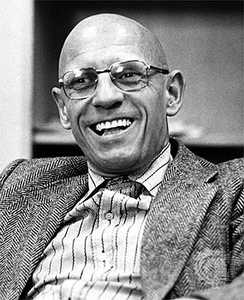
Michel Foucault
In his 1975 seminal text, Discipline and Punish: The Birth of the Prison, Michel Foucault identifies a new form of power introduced in the eighteenth century: discipline.
7.2.2: Conformity and Obedience
Conformity is the act of matching attitudes, beliefs, and behaviors to group norms.
Learning Objective
Differentiate among compliance, identification, and internalization; and between obedience and conformity
Key Points
- Norms are implicit rules shared by a group of individuals, that guide their interactions with others and among society or social group.
- Herbert Kelman identified three major types of conformity: compliance, identification, and internalization.
- Compliance is public conformity, while possibly keeping one’s own original beliefs for oneself. Identification is conforming to someone who is liked and respected. Internalization is accepting the belief or behavior and conforming both publicly and privately, if the source is credible.
- Obedience is a form of social influence in which a person accepts instructions or orders from an authority figure.
- Stanley Milgram created a highly controversial and often replicated study, the Milgram experiment, where he focused on how long participants would listen to and obey orders from the experimenter.
- In the Stanford Prison Experiment, Philip Zimbardo placed college age students into an artificial prison environment in order to study the impact of “social forces” on participants behavior.
- Stanley Milgram created a highly controversial and often replicated study, the Milgram experiment, where he focused how long participants would listen to and obey orders from the experimenter.
- In the Stanford Prison Experiment, Philip Zimbardo placed college age students into an artificial prison environment in order to study the impacts of “social forces” on participants behavior.
Key Terms
- compliance
-
the tendency of conforming with or agreeing to the wishes of others
- identification
-
A feeling of support, sympathy, understanding, or belonging towards somebody or something.
- conformity
-
the ideology of adhering to one standard or social uniformity
Example
- Obedience can be seen as both a sin and a virtue. For example in a situation when one orders a person to kill another innocent person and he or she does this willingly, it is a sin. However when one orders a person to kill an enemy who will end a lot of innocent lives and he or she does this willingly it can be deemed a virtue.
Conformity
Social control is established by encouraging individuals to conform and obey social norms, both through formal and informal means. Conformity is the act of matching attitudes, beliefs, and behaviors to group norms. The tendency to conform occurs in small groups and in society as a whole, and may result from subtle unconscious influences or direct and overt social pressure. Conformity can occur in the presence of others, or when an individual is alone. For example, people tend to follow social norms when eating or watching television, regardless of whether others are present. As conformity is a group phenomenon, factors such as group size, unanimity, cohesion, status, prior commitment, and public opinion help determine the level of conformity an individual displays.
Harvard psychologist Herbert Kelman identified three major types of conformity: compliance, identification, and internalization. Compliance is public conformity, while possibly keeping one’s own original beliefs independent. It is motivated by the need for approval and the fear of being rejected. Identification is conforming to someone who is liked and respected, such as a celebrity or a favorite uncle. This can be motivated by the attractiveness of the source, and this is a deeper type of conformism than compliance. Internalization is accepting the belief or behavior and conforming both publicly and privately. It is the deepest influence on people, and it will affect them for a long time.
Solomon E. Asch conducted a classic study of conformity. He exposed students in a group to a series of lines, and the participants were asked to match the length of one line with a standard line, a task with a very clear right answer . Only one individual in the group was a true student, however – the rest were confederates, or actors that were pretending to be students, but knew the true aim of the study. The confederates were instructed to unanimously give the wrong answer (matching the standard line with an incorrect line) in 12 of the 18 trials. The results showed a surprisingly high degree of conformity: 76% of the students conformed on at least one trial, giving the wrong answer to match the answer of the confederates (who they perceived as actual students). On average people conformed one-third of the time, even in situations where the correct answer was obvious.
Obedience
In human behavior, obedience is a form of social influence in which a person accepts instructions or orders from an authority figure. Obedience differs from compliance, which is behavior influenced by peers, and from conformity, which is behavior intended to match that of the majority. Obedience can be seen as both a sin and a virtue. For example in a situation when one orders a person to kill another innocent person and he or she does this willingly, it is a sin. However, when one orders a person to kill an enemy who will end a lot of innocent lives and he or she does this willingly, it can be deemed a virtue.
Stanley Milgram created a highly controversial and often replicated study of obedience. In the Milgram experiment, participants were told they were going to contribute to a study about punishment and learning, but the actual focus was on how long they would listen to and obey orders from the experimenter. The participants were instructed that they had to shock a person in another room for every wrong answer on a learning task, and the shocks increased with intensity for each wrong answer. If participants questioned the procedure, the researcher would encourage them to continue. The Milgram study found that participants would obey orders even when it posed severe harm to others.
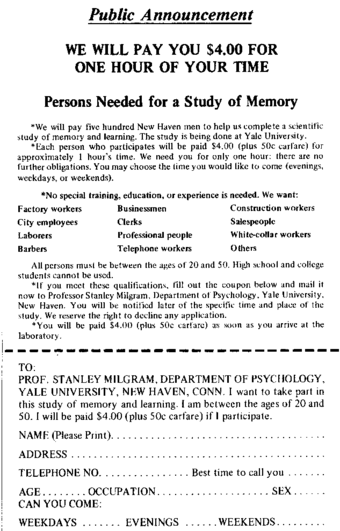
Milgram experiment advertising
In the Milgram experiment, participants were told they were going to contribute to a study about punishment and learning, but the actual focus was on how long they would listen to and obey orders from the experimenter.
The other classical study on obedience was conducted at Stanford University during the 1970’s. Phillip Zimbardo was the principle investigator responsible for the experiment. In the Stanford Prison Experiment, college-age students were put into a pseudo prison environment in order to study the impacts of “social forces” on participants’ behavior. Unlike the Milgram study, in which each participant underwent the same experimental conditions, the Zimbardo study used random assignment so that half the participants were prison guards and the other half were prisoners. The experimental setting was made to physically resemble a prison, while simultaneously inducing “a psychological state of imprisonment.” Zimbardo found that the guards in the study obeyed orders so willingly that their behavior turned aggressive. Likewise, prisoners were hostile to and resented their guards, and because of the psychological duress induced in the experiment, it had to be shut down after only 6 days.
7.2.3: Informal Means of Control
Informal social control refers to the reactions of individuals and groups that bring about conformity to norms and laws.
Learning Objective
Evaluate the mechanisms of informal social control
Key Points
- Informal sanctions may include shame, ridicule, sarcasm, criticism, and disapproval. In extreme cases sanctions may include social discrimination and exclusion.
- Socialization is a term used by sociologists to refer to the lifelong process of inheriting and disseminating norms, customs, and ideologies, which provide an individual with the skills and habits necessary for participating within his or her own society.
- The family is often the most important agent of socialization because it is the center of the child’s life.
- A peer group is a social group whose members have interests, social positions, and age in common. It can also be an important agent of socialization.
- A peer group is a social group whose members have interests, social positions and age in common.
Key Term
- Informal sanctions
-
These are the reactions of individuals and groups that bring about conformity to norms and laws. These can include peer and community pressure, bystander intervention in a crime, and collective responses such as citizen patrol groups.
Example
- As with formal controls, informal controls reward or punish acceptable or unacceptable behavior. Informal controls are varied and differ from individual to individual, group to group, and society to society. For example, at a women’s institute meeting, a disapproving look might convey that it is inappropriate to flirt with the minister. In a criminal gang, on the other hand, a stronger sanction might apply in the case of someone threatening to inform to the police.
Informal social control—the reactions of individuals and groups that bring about conformity to norms and laws—includes peer and community pressure, bystander intervention in a crime, and collective responses such as citizen patrol groups. The social values that are present in individuals are products of informal social control. It is exercised by a society without explicitly stating these rules and is expressed through customs, norms, and mores.
Informal sanctions may include shame, ridicule, sarcasm, criticism, and disapproval. In extreme cases sanctions may include social discrimination and exclusion. An example of a negative sanction is seen in a scene from the Pink Floyd film The Wall, where the young protagonist is ridiculed and verbally abused by a high school teacher for writing poetry in a mathematics class. As with formal controls, informal controls reward or punish acceptable or unacceptable behavior. Informal controls differ from individual to individual, group to group, and society to society. For example, at a women’s institute meeting, a disapproving look might convey that it is inappropriate to flirt with the minister. In a criminal gang, a stronger sanction applies in the case of someone threatening to inform to the police.
Socialization
Socialization is a term used by sociologists to refer to the lifelong process of inheriting and disseminating norms, customs, and ideologies, which provide an individual with the skills and habits necessary for participating within his or her own society. Primary socialization occurs when a child learns the attitudes, values, and actions appropriate for individuals as members of a particular culture. Secondary socialization takes place outside the home, where children and adults learn how to act in a way that is appropriate for the situations they are in. Finally, re-socialization refers to the process of discarding former behavior patterns and reflexes, accepting new ones as part of a transition in one’s life.
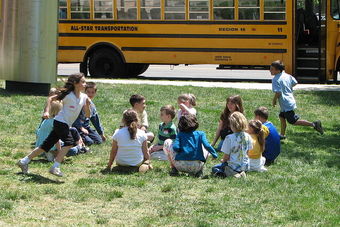
Group Socialization
Informal social control—the reactions of individuals and groups that bring about conformity to norms and laws—includes peer and community pressure, bystander intervention in a crime, and collective responses such as citizen patrol groups.
The family is often the most important agent of socialization because it is the center of the child’s life. Agents of socialization can differ in effects. A peer group is a social group whose members have interests, social positions, and age in common. It can also be an important influence on a child, as this is where children can escape supervision and learn to form relationships on their own. The influence of the peer group typically peaks during adolescence. However, peer groups generally only affect short-term interests, unlike the long-term influence exerted by the family.
7.2.4: Formal Means of Control
Formal means of social control are generally state-determined, through the creation of laws and their enforcement.
Learning Objective
Explain the relationship between formal means of social control and state authority
Key Points
- Formal means of control include the threats of sanctions or enforced sanctions manipulated by the state to encourage social control.
- The death penalty and imprisonment are forms of social control that the government utilizes to maintain the rule of law.
- Social theorist Max Weber contributed to our understanding of formal social control by writing about the state’s monopoly on violence.
- In democratic societies, the goals and mechanisms of formal social control are determined through legislation by elected representatives and thus enjoy a measure of support from the population and voluntary compliance.
Key Terms
- Formal means of Control
-
Formal sanctions such as fines and imprisonment.
- Max Weber
-
(1864–1920) A German sociologist, philosopher, and political economist who profoundly influenced social theory, social research, and the discipline of sociology itself.
- Politics as Vocation
-
An essay that Weber wrote of the definitional relationship between the state and violence in the early twentieth century.
Example
- By the “monopoly on violence,” Weber means the state is the only institution within a society who can legitimately exercise violence on society’s members. When Sam kills Katie, he is a criminal guilty of murder. When the state kills Katie, it is enacting its authority to use the death penalty to protect society.
Formal means of social control are the means of social control exercised by the government and other organizations who use law enforcement mechanisms and sanctions such as fines and imprisonment to enact social control. In democratic societies the goals and mechanisms of formal social control are determined through legislation by elected representatives. This gives the control mechanisms a measure of support from the population and voluntary compliance. The mechanisms utilized by the state as means of formal social control span the gamut from the death penalty to curfew laws.
From a legal perspective, sanctions are penalties or other means of enforcement used to provide incentives for obedience with the law, or rules and regulations. Criminal sanctions can take the form of serious punishment, such as corporal or capital punishment, incarceration, or severe fines. Within the civil law context, sanctions are usually monetary fines.
Our understanding of formal control is enhanced by social theorist Max Weber’s work on the state’s use of violence. Weber writes of the definitional relationship between the state and violence in the early twentieth century in his essay “Politics as Vocation. ” Weber concludes that the state is that which has a monopoloy on violence. By this, Weber means that the state is the only institution within a society who can legitimately exercise violence on society’s members. When Sam kills Katie, he is a criminal guilty of murder. When the state kills Katie, it is enacting its authority to use the death penalty to protect society. Weber uses this definition to define what constitutes the state. The formal means of social control and the monopoly on violence serve a similar role in defining the state—they both illustrate the unique relationship between the state and its subjects.
7.3: Theories of Crime and Deviance
7.3.1: Sociological Theories of Deviance
Sociological theories of deviance are those that use social context and social pressures to explain deviance.
Learning Objective
Describe four different sociological approaches to deviance
Key Points
- Social strain typology, developed by Robert K. Merton, is based upon two criteria: (1) a person’s motivations or adherence to cultural goals; (2) a person’s belief in how to attain her goals.
- According to Merton, there are five types of deviance based upon these criteria: conformity, innovation, ritualism, retreatism and rebellion.
- Structural functionalism argues that deviant behavior plays an active, constructive role in society by ultimately helping cohere different populations within a society.
- Conflict theory suggests that deviant behaviors result from social, political, or material inequalities in a social group.
- Labeling theory argues that people become deviant as a result of people forcing that identity upon them and then adopting the identity.
Key Terms
- typology
-
The systematic classification of the types of something according to their common characteristics.
- conformity
-
the ideology of adhering to one standard or social uniformity
- Retrospective labeling
-
Occurs when a deviant recognizes her acts as deviant prior to the primary deviance, while prospective labeling is when the deviant recognizes future acts as deviant.
Examples
- Merton’s typology is fascinating because it suggests that people can turn to deviance in the pursuit of widely accepted social values and goals. For instance, individuals in the U.S. who sell illegal drugs have rejected the culturally acceptable means of making money, but they still share the widely accepted cultural value of making money. Thus, deviance can be the result of accepting one norm, but breaking another in order to pursue the first.
- An example of conflict theory on the ground would be the Occupy Wall Street that began in the fall of 2011. Angered at the extreme inequalities in wealth distribution in the United States, protesters began to organize more communal ways of living in Zucotti Park, by Wall Street in New York City, in order to protest the lavish means of life of those at the top of the socioeconomic ladder.
The study of social deviance is the study of the violation of cultural norms in either formal or informal contexts. Social deviance is a phenomenon that has existed in all societies with norms. Sociological theories of deviance are those that use social context and social pressures to explain deviance .

Crime
The study of social deviance is the study of the violation of cultural norms in either formal or informal contexts. Social deviance is a phenomenon that has existed in all societies where there have been norms.
Social Strain Typology
Four main sociological theories of deviance exist. The first is the social strain typology developed by American sociologist Robert K. Merton. Merton proposed a typology of deviant behavior, a classification scheme designed to facilitate understanding. Merton typology of deviance was based on two criteria: (1) a person’s motivations or adherence to cultural goals; (2) a person’s belief in how to attain her goals. According to Merton, there are five types of deviance based upon these criteria: conformity, innovation, ritualism, retreatism and rebellion. Merton’s typology is fascinating because it suggests that people can turn to deviance in the pursuit of widely accepted social values and goals. For instance, individuals in the U.S. who sell illegal drugs have rejected the culturally acceptable means of making money, but they still share the widely accepted cultural value of making money. Thus, deviance can be the result of accepting one norm, but breaking another in order to pursue the first.
Structural Functionalism
The second main sociological explanation of deviance comes from structural functionalism. This approach argues that deviant behavior plays an active, constructive role in society by ultimately helping to cohere different populations within a particular society. Deviance helps to distinguish between acceptable and unacceptable behavior. It draws lines and demarcates boundaries. This is an important function that affirms the cultural values and norms of a society for the members of that society. In addition to clarifying the moral boundaries of society, deviant behavior can also promote social unity by creating an “us-versus-them” mentality in relation to deviant individuals. Finally, deviance is actually seen as one means for society to change over time. Deviant behavior can imbalance the social equilibrium but—in the process of restoring balance—society will adjust norms. With changing norms in response to deviance, the deviant behavior can contribute to long-term social stability.
Conflict Theory
The third main sociological theory of deviance is conflict theory. Conflict theory suggests that deviant behaviors result from social, political, or material inequalities of a social group. In response to these inequalities, certain groups will act deviantly in order to change their circumstances, change the social structure that engendered their circumstances, or just to “act out” against their oppressors. An example of conflict theory would be the Occupy Wall Street movement that began in the fall of 2011. Angered at the extreme inequalities in wealth distribution in the United States, protesters began to organize more communal ways of living in Zucotti Park—near Wall Street in New York City—in order to protest the lavish means of life of those at the top of the socioeconomic ladder. The protesters were deviating from social norms of coherence in order to articulate grievances against the extremely wealthy. Their actions and perspectives demonstrate the use of conflict theory to explain social deviance.
Labeling Theory
The fourth main sociological theory of deviance is labeling theory. Labeling theory refers to the idea that individuals become deviant when a deviant label is applied to them; they adopt the label by exhibiting the behaviors, actions, and attitudes associated with the label. Labeling theory argues that people become deviant as a result of others forcing that identity upon them. This process works because of stigma; in applying a deviant label, one attaches a stigmatized identity to the labeled individual .
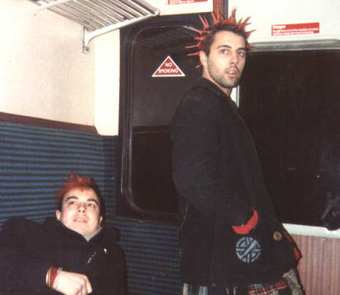
Punks
Labeling theory argues that people, such as punks, become deviant as a result of people forcing that identity upon them and then adopting the identity.
Labeling theory allows us to understand how past behaviors of a deviant-labeled individual are reinterpreted in accordance with their label. This process of recasting past actions in light of a current deviant identity is referred to as “retrospective labeling. ” A clear example of retrospective labeling is seen in how the perpetrators of the Columbine High School massacre were recast after the incident took place. Much of their behavior leading up to the school shootings has been reinterpreted in light of the deviant identity with which they were labeled as a result of the shootings.
7.3.2: Biological Theories of Deviance
A biological theory of deviance proposes that an individual deviates from social norms largely because of their biological makeup.
Learning Objective
Outline the main assumptions of three biological theories of deviance
Key Points
- A biological interpretation of formal deviance was first advanced by the Italian School of Criminology, a school of thought originating from Italy during the mid-nineteenth century.
- The school was headed by medical criminologist Cesare Lombroso, who argued that criminality was a biological trait found in some human beings. The term Lombroso used to describe the appearance of organisms resembling ancestral forms of life is atavism.
- The idea of atavism drew a connection between an individual’s appearance and their biological propensity to deviate from social norms.
- Enrico Ferri took this idea farther, arguing that anyone convicted of a crime should be detained for as long as possible. According to Ferri’s line of thought, if individuals committed crimes because of their biological constitution, what was the point of deterrence or rehabilitation?
- Garofalo is perhaps best known for his efforts to formulate a “natural” definition of crime. According to his view, those who violate human universal laws are themselves “unnatural”.
Key Terms
- Italian School of Criminology
-
The Italian school of criminology was founded at the end of the 19th century by Cesare Lombroso (1835–1909) and two of his Italian disciples, Enrico Ferri (1856–1929) and Raffaele Garofalo (1851–1934).
- penology
-
The processes devised and adopted for the punishment and prevention of crime.
- atavism
-
The reappearance of an ancestral characteristic in an organism after several generations of absence.
Example
- Historically, biological theories of crime assumed criminal tendencies could be discovered by looking at physical traits that relate to stereotypical suspects, like having a lot of tattoos or having a muscular physique.
A biological theory of deviance proposes that an individual deviates from social norms largely because of their biological makeup. The theory primarily pertains to formal deviance, using biological reasons to explain criminality, though it can certainly extend to informal deviance.
Cesare Lombroso
A biological interpretation of formal deviance was first advanced by the Italian School of Criminology, a school of thought originating from Italy during the mid-nineteenth century. The school was headed by medical criminologist Cesare Lombroso, who argued that criminality was a biological trait found in some human beings. Enrico Ferri and Raffaelo Garofalo continued the Italian School as Lombroso’s predecessors. The Italian School was interested in why some individuals engaged in criminal behavior and others did not. Their explanation was that some individuals had a biological propensity for crime.
The term Lombroso used to describe the appearance of organisms resembling ancestral forms of life is atavism. He belived that atavism was a sign of inherent criminalities, and thus he viewed born criminals as a form of human sub-species. Lombroso believed that atavism could be identified by a number of measurable physical stigmata—a protruding jaw, drooping eyes, large ears, twisted and flattish nose, long arms relative to the lower limbs, sloping shoulders, and a coccyx that resembled “the stump of a tail. ” The concept of atavism was glaringly wrong, but like so many others of his time, Lombroso sought to understand behavioral phenomena with reference to the principles of evolution as they were understood at the time.
Enrico Ferri
Lombroso’s work was continued by Erico Ferri’s study of penology, the section of criminology that is concerned with the philosophy and practice of various societies in their attempt to repress criminal activities. Ferri’s work on penology was instrumental in developing the “social defense” justification for the detention of individuals convicted of crimes. Ferri argued that anyone convicted of a crime should be detained for as long as possible. According to Ferri’s line of thought, if individuals committed crimes because of their biological constitution, what was the point of deterrence or rehabilitation? For Ferri, none of these therapeutic interventions could change the offender’s biology, making them pointless. After an individual had been convicted of a crime, the state’s responsibility was to protect the community and prevent the criminal from doing more harm—as his biology determined he would do.
Raffaelo Garofalo
Garofalo is perhaps best known for his efforts to formulate a “natural” definition of crime. Classical thinkers accepted the legal definition of crime uncritically; crime is what the law says it is. This appeared to be rather arbitrary and “unscientific” to Garofalo, who wanted to anchor the definition of crime in something natural. Most significant was Garofalo’s reformulation of classical notions of crime and his redefinition of crime as a violation of natural law, or a human universal.
A human universal is a trait, characteristic, or behavior that exists across cultures, regardless of the nuances of a given context. A famous example of a universal is the incest taboo. Exempting a very small number of small communities, all human cultures have a taboo against incest in some form. Garofalo’s presentaion of crime as a violation of a human universal allows for one to characterize criminals as unnatural. As soon as criminals are marked as inhuman or unnatural, the public has license to think of an individual convicted of a crime as completely unlike the rest of society; a whole new range of punishments are authorized, including serious social stigmatization.
Biological Theories Today
Italian School biological explanations have not resonated in criminal justice systems in America. However, some traces still exist. Now, the conversation about crime and biological explanations focuses more on the relationship between genetics and crime than the relationship between phenotypic features and crime. Because the modern emphasis is on actual genetics rather than phenotypic expressions of genes, stereotyping of individuals with “criminal” traits or propensities is more difficult. For example, when walking down the street, you can tell who has a protruding jaw, but you can’t tell who has the genetic combination that increases one’s propensity for aggression. Though the debate has mutated, a biological explanation for deviance and crime is still commonplace.
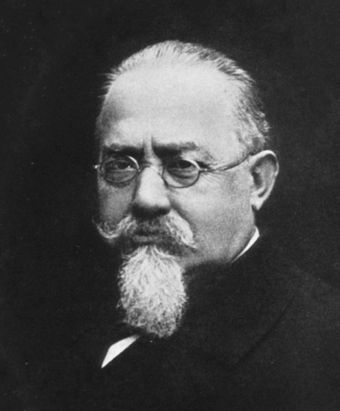
Cesare Lombroso
Cesare Lombroso argued that criminality was a biological trait found in some human beings
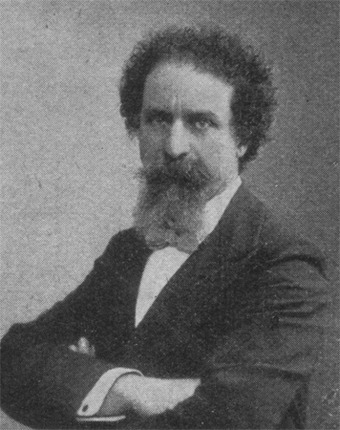
Enrico Ferri
Lombroso’s work was continued by Erico Ferri’s study of penology, the section of criminology that is concerned with the philosophy and practice of various societies in their attempt to repress criminal activities.
7.3.3: Psychological Theories of Deviance
Psychological theories of deviance use a deviant’s psychology to explain his motivation or compulsion to violate social norms.
Learning Objective
Discuss the problematic aspects of psychological theories of deviance
Key Points
- Conduct disorder is a psychological disorder diagnosed in childhood that presents itself through a repetitive and persistent pattern of behavior in which the basic rights of others of major age-appropriate norms are violated.
- Deviant behavior can also be explained by psychological trauma in one’s past.
- Post-traumatic Stress Disorder (PTSD) is a psychological condition in which a traumatic incident in one’s past compels an individual to have abnormal reactions to stimuli.
- Though psychological theories are frequently employed to explain deviant behavior, one should bear in mind that the stability of psychological categories is constantly in flux.
Key Terms
- Psychological theory of deviance
-
In many ways, psychological theories of deviance mirror biological explanations (see section: Biological Theories of Deviance), only with an emphasis on the brain.
- conduct disorder
-
Conduct disorder is a psychological disorder diagnosed in childhood that presents itself through a repetitive and persistent pattern of behavior in which the basic rights of others or major age-appropriate norms are violated.
- post-traumatic stress disorder
-
Any condition that develops following some stressful situation or event, such as sleep disturbance, recurrent dreams, withdrawal or lack of concentration.
Example
- PTSD is also discussed in cases of deviant, violent behavior on the part of individuals who have experience trauma while in the military. Consider the case of Sergeant Robert Bales. Sgt. Bales is an American soldier who has served four tours in Iraq and Afghanistan over the past decade. Sgt. Bales is accused of getting drunk and going into a town nearby his post in Afghanistan and murdering 16 Afghanis without provocation. Experts are already speculating that the psychological trauma of multiple redeployments contributed to Sgt. Bales’s alleged deviance.
Psychological theories of deviance use a deviant’s psychology to explain his motivation and compulsion to violate social norms. In many ways, psychological theories of deviance mirror biological explanations, only with an added emphasis on brain function. Whereas historical biological explanations, such as those provided by the Italian School, used biological traits from the whole body (e.g., protruding jaws, large ears) as signifiers of a biological propensity for criminal behavior, today’s psychological theories of deviance use the biology of the brain (in terms of the structure of the brain, levels of neurotransmitters, and psychiatric diagnoses) to explain deviance.
Conduct Disorder
One case study of a psychological theory of deviance is the case of conduct disorder. Conduct disorder is a psychological disorder diagnosed in childhood that presents itself through a repetitive and persistent pattern of behavior in which the basic rights of others and major age-appropriate norms are violated. This childhood disorder is often seen as the precursor to antisocial personality disorder. According the Diagnostic and Statistical Manual of Mental Disorders–IV (the professional manual listing all medically recognized mental disorders and their symptoms), conduct disorder presents as aggressive and disrespectful behavior. Compared to normal controls, youth with early and adolescent onset of conduct disorder displayed reduced responses in the brain regions associated with antisocial behavior. In addition, youth with conduct disorder demonstrated less responsiveness in the orbitofrontal regions of the brain during a stimulus-reinforcement and reward task. These psychological symptoms of conduct disorder, both in terms of neuroanatomy and neurotransmitter regulation, help to explain the explanatory link between psychology and crime. Moreover, they demonstrate the increasingly fluid boundary between psychological and biological theories of deviance.
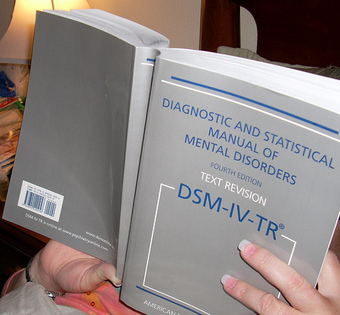
Diagnostic and Statistical Manual of Mental Disorders – IV
According to the Diagnostic and Statistical Manual of Mental Disorders – IV, the professional manual listing all medically recognized mental disorders and their symptoms, conduct disorder presents as aggressive and disrespectful behavior.
Psychological Trauma
Psychological theories of deviance do not necessarily have a biological element. Deviant behavior can also be explained by psychological trauma in one’s past. Take, for example, the case of post-traumatic stress disorder (PTSD). This is a psychological condition in which a traumatic incident in one’s past causes an individual to have abnormal reactions to stimuli. PTSD is frequently invoked in cases of child abuse, in which the psychological trauma of having been abused as a child can contribute to deviant behavior in the future. PTSD is also discussed in cases of deviant, violent behavior on the part of individuals who have experienced trauma while in the military. Consider the case of Sergeant Robert Bales. Sgt. Bales is an American soldier who has served four tours in Iraq and Afghanistan over the past decade. Sgt. Bales is accused of getting drunk and going into a town nearby his post in Afghanistan and murdering 16 Afghanis without provocation. Experts are already speculating that the psychological trauma of multiple redeployments contributed to Sgt. Bales’s alleged deviance.
Problems with Psychological Theories of Deviance
While psychiatric diagnoses are commonly used to explain deviance, one must remember that what counts as a legitimate diagnosis is always in contention. The DSM, the manual for what the psychological community recognizes as a legitimate psychiatric diagnosis, is a revised manual. One example of the importance of these revisions: homosexuality used to be included in the DSM as a psychiatric condition. Thus, until it was removed in 1986, homosexuality (the psychological condition) could have been a psychological explanation for deviant sexuality. However, since being removed from the DSM, homosexuality is no longer recognized as a legitimate psychiatric condition and, therefore, the now debunked homosexuality-as-psychiatric-condition does not serve an explanatory role in regards to deviant sexuality. This goes to demonstrate the fluctuating nature of psychological theories of deviance.
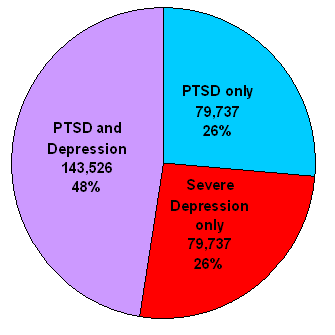
PTSD Statistics
Cases of PTSD and Severe Depression Among U.S. Veterans Deployed to Iraq and Afghanistan Between Oct 2001 and Oct 2007
7.4: The Functionalist Perspective on Deviance
7.4.1: The Functionalist Perspective on Deviance
Functionalism claims that deviance help to create social stability by presenting explanations of non-normative and normative behaviors.
Learning Objective
Describe the functionalist view of deviance in society
Key Points
- A structural functionalist approach emphasizes social solidarity, divided into organic and mechanical typologies, and stability in social structures.
- Deviance provides the key to understanding the disruption and recalibration of society that occurs over time. Some traits that could cause social disruption will be stigmatized.
- Systems of deviance create norms and tell members of a given society on how to behave by laying out patterns of acceptable and unacceptable behavior.
- Deviance allows for group majorities to unite around their worldview, often at the expense of those marked as deviant. Social parameters create boundaries between populations and enable an “us-versus-them” mentality within the two groups.
- Being marked as deviant can actually bolster solidarity within the marked community as members take pride and ownership in their stigmatized identity.
- Some traits will be stigmatized and can potentially cause social disruption. However, as traits become more mainstream, society will gradually adjust to incorporate the formerly stigmatized traits.
Key Terms
- population
-
A count of the number of residents within a political or geographical boundary, such as a town, a nation, or the world or of the number of individuals belonging to a particular group.
- structural functionalism
-
A sociological approach that looks at society through a macro-level orientation, which is a broad focus on the social structures that shape society as a whole.
- Social Parameters
-
The given rules and norms in a given social situation.
Example
- As traits become more mainstreamed, society will gradually adjust to incorporate the formerly stigmatized traits. Take, for example, homosexuality. In urban America 50 years ago, homosexual behavior was considered deviant. On the one hand, this fractured society into those marked as homosexuals and those unmarked as normative heterosexuals. While this us-versus-them mentality solidified social identities and solidarities within the two categories, there was nevertheless an overarching social schism. As time went on, homosexuality came to be accepted as more mainstream.
What function does deviance play in society? This is a question asked by sociologists subscribing to the school of structural functionalism. Structural functionalism has its roots in the very origins of sociological thought and the development of sociology as a discipline. Though precursors of structural functionalism have been in existence since the mid-1800’s, structural functionalism was solidified by Émile Durkheim in the late nineteenth century . A structural functionalist approach emphasizes social solidarity, divided into organic and mechanical typologies, and stability in social structures. Structural functionalists ask “How does any given social phenomenon contribute to social stability?” This question cannot be answered without investigating deviance .
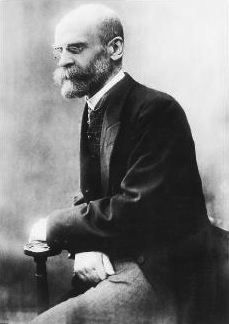
Émile Durkheim
Durkheim formally established the academic discipline and, with Karl Marx and Max Weber, is commonly cited as the principal architect of modern social science and father of sociology.
For the structural functionalist, deviance serves two primary roles in creating social stability. First, systems of recognizing and punishing deviance create norms and tell members of a given society how to behave by laying out patterns of acceptable and unacceptable behavior. In order to avoid unsettling society, one must be aware of what behaviors are marked as deviant. Second, these social parameters create boundaries between populations and enable an “us-versus-them” mentality within different groups. Deviance allows for the majorities to unite around their normativity, at the expense of those marked as deviant. Conversely, being marked as deviant can actual bolster solidarity within the marked community, as members take pride and ownership in their stigmatized identity and create cohesive units of their own (for example, members of the LGBT community unifying around Pride).
From a structural functionalist perspective, then, how does society change, particularly in regards to establishing norms and deviant behaviors? Deviance provides the key to understanding the disruption and re-calibration of society that occurs over time. Some traits will be stigmatized and can potentially cause social disruption. However, as traits become more mainstream, society will gradually adjust to incorporate the formerly stigmatized traits.
Take, again, the example of homosexuality. In urban America 50 years ago, homosexual behavior was considered deviant. On the one hand, this fractured society into those marked as homosexuals and those unmarked as normative heterosexuals. While this us-versus-them mentality solidified social identities and solidarities within the two categories, there was an overarching social schism. As time went on, homosexuality has come to be accepted as somewhat more mainstream. Accordingly, what originally appears as a fracturing of society actually reinforces social stability by enabling mechanisms for social adjustment and development.
7.4.2: Strain Theory: How Social Values Produce Deviance
Strain theory states that social structures within society may pressure citizens to commit crimes.
Learning Objective
Apply Merton’s typology of deviance to the real world and give examples for each type
Key Points
- Social strain theory was developed by famed American sociologist Robert K. Merton. “Strain” refers to the discrepancies between culturally defined goals and the institutionalized means available to achieve these goals.
- Merton was proposing a typology of deviance based upon two criteria: (1) a person’s motivations or her adherence to cultural goals; (2) a person’s belief in how to attain his goals.
- A typology is a classification scheme designed to facilitate understanding.
- According to Merton, there are five types of deviance based upon these criteria: conformity, innovation, ritualism, retreatism and rebellion.
Key Terms
- Social strain theory
-
Social strain theory was developed by famed American sociologist Robert K. Merton who, in his discussion of deviance, proposed a typology of deviant behavior.
- typology
-
The systematic classification of the types of something according to their common characteristics.
Example
- What makes Merton’s typology so fascinating is that people can turn to deviance in the pursuit of widely accepted social values and goals. For instance, individuals in the U.S. who sell illegal drugs have rejected the culturally acceptable means of making money, but still share the widely accepted cultural value in the U.S. of making money. Thus, deviance can be the result of accepting one norm, but breaking another in order to pursue the first.
Social strain theory was developed by famed American sociologist Robert K. Merton. The theory states that social structures may pressure citizens to commit crimes . Strain may be structural, which refers to the processes at the societal level that filter down and affect how the individual perceives his or her needs. Strain may also be individual, which refers to the frictions and pains experienced by an individual as he or she looks for ways to satisfy individual needs. These types of strain can insinuate social structures within society that then pressure citizens to become criminals.

Social Strain Theory
Five types of deviance.
In his discussion of deviance Merton proposed a typology of deviant behavior that illustrated the possible discrepancies between culturally defined goals and the institutionalized means available to achieve these goals. A typology is a classification scheme designed to facilitate understanding. In this case, Merton was proposing a typology of deviance based upon two criteria: (1) a person’s motivations or his adherence to cultural goals; (2) a person’s belief in how to attain his goals. According to Merton, there are five types of deviance based upon these criteria:
- Conformity involves the acceptance of the cultural goals and means of attaining those goals.
- Innovation involves the acceptance of the goals of a culture but the rejection of the traditional and/or legitimate means of attaining those goals. For example, a member of the Mafia values wealth but employs alternative means of attaining his wealth; in this example, the Mafia member’s means would be deviant.
- Ritualism involves the rejection of cultural goals but the routinized acceptance of the means for achieving the goals.
- Retreatism involves the rejection of both the cultural goals and the traditional means of achieving those goals.
- Rebellion is a special case wherein the individual rejects both the cultural goals and traditional means of achieving them but actively attempts to replace both elements of the society with different goals and means.
What makes Merton’s typology so fascinating is that people can turn to deviance in the pursuit of widely accepted social values and goals. For instance, individuals in the U.S. who sell illegal drugs have rejected the culturally acceptable means of making money, but still share the widely accepted cultural value in the U.S. of making money. Thus, deviance can be the result of accepting one norm, but breaking another in order to pursue the first. In this sense, according social strain theory, social values actually produce deviance in two ways. First, an actor can reject social values and therefore become deviant. Additionally, an actor can accept social values but use deviant means to realize them.
Critics point to the fact that there is an ample amount of crime/delinquent behavior that is “non-utilitarian, malicious, and negativistic” (O’Grady, 2011), which highlights that not all crimes are explicable using Merton’s theory. Crimes such as vandalism, for example, can’t be explained by a need for material acquisition.
7.4.3: Illegitimate Opportunity Structures: Social Class and Crime
Illegitimate opportunity structures are the rules that operate within deviant subcultures.
Learning Objective
Explain how illegitimate opportunity structures function in different subcultures
Key Points
- American sociologists Richard Cowan and Lloyd Ohlin extended Robert K. Merton’s social strain theory to directly address juvenile delinquency and social class.
- A subculture is a group of people with a culture that differentiates them from the larger culture to which they belong.
- In a criminal subculture, youth learn to use crime for material gain.
- In a conflict subculture, youth learn to form gangs as a way to express frustration about the lack of normative opportunity structures in their neighborhood.
- In a retreatist subculture youth learn to reject both legitimate and illegitimate opportunity structures.
- In a retreatist subculture youth learn to reject both legitimate and illegitimate opportunity structures
Key Terms
- Illegitimate opportunity structure
-
In criminology, subcultural theory emerged from the work of the Chicago School on gangs and developed through the symbolic interactionism school into a set of theories arguing that certain groups or subcultures in society have values and attitudes that are conducive to crime and violence. The primary focus is on juvenile delinquency because theorists believe that if this pattern of offending can be understood and controlled, it will break the transition from teenage offender into habitual criminal.
- subculture
-
A portion of a culture distinguished from the larger society around it by its customs or other features.
- Conflict subculture
-
In a conflict subculture, youth learn to form gangs as a way to express frustration about the lack of normative opportunity structures in their neighborhood.
Examples
- Music-based subcultures are particularly vulnerable to this process, and so what may be considered a subculture at one stage in its history—such as jazz, goth, punk, hip-hop and rave cultures—may represent mainstream taste within a short period of time
- In a conflict subculture, youth learn to form gangs as a way to express frustration about the lack of normative opportunity structures in their neighborhood. Thus, gangs become a subculture of their own, in contradistinction to the normative, peaceful model of youth behavior
American sociologists Richard Cowan and Lloyd Ohlin extended Robert K. Merton’s social strain theory to directly address juvenile delinquency and social class. If you recall, social strain theory develops a typology of deviance in which an individual can deviate on two planes. An individual can be deviant by refusing to accept social norms or an individual can deviate by accepting social norms but using deviant means to achieve their realization. In the context of the U.S., in which prosperity is a social value, one could deviate by rejecting the notion of wealth. Alternatively, one could deviate by aspiring to a wealthy lifestyle but earning one’s living as a pickpocket.
In 1960, Cowan and Ohlin published Delinquency and Opportunity: A Theory of Delinquent Gangs. In this work, they noted that the individuals who achieved social norms by deviant means frequently operated from within institutions that, similarly to those operating in normative institutions, had rules of behavior. A key to understanding Cowan and Ohlin’s theory is the notion of subculture. A subculture is a group of people with a culture that differentiates them from the larger culture to which they belong . Subcultures create a stacking or layering effect within a larger cultural context. While a pickpocket may deviate from American social norms, he adheres to social norms of a smaller group of individuals who identify as American pickpockets. Cowan and Ohlin asserted that subcultures have rules of their own. Illegitimate opportunity structures are the rules that operate within deviant subcultures. Cowan and Ohlin emphasized how the structures of these deviant subcultures paralleled the rules and operations of more socially acceptable institutions.
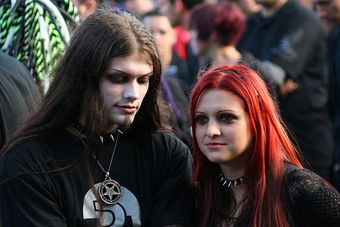
Goths
Goths are an example of a subculture: A group of people with a culture that differentiates them from the larger culture to which they belong.
Cowan and Ohlin used juvenile delinquency as a case study to explore this theory of illegitimate opportunity structures. In a criminal subculture, youth learn to use crime for material gain. This subculture usually forms in areas where there is an established organization of adult crime that provides an illegitimate opportunity structure for youths to learn how to behave criminally for material success. In a conflict subculture, youth learn to form gangs as a way to express frustration about the lack of normative opportunity structures in their neighborhood. New initiates into the gang will learn how to engage in conflict or gang activities to express frustrations by watching gang leadership. Thus, gangs become a subculture of their own, in contradistinction to the normative, peaceful model of youth behavior. Finally, in a retreatist subculture youth learn to reject both legitimate and illegitimate opportunity structures. These individuals are thought to be “double failures” in that they engage in conduct that is neither normative and accepted by society at large nor deviant but accepted by a subculture.
Criminal and conflict subcultures demonstrate that individuals can reject the normative means of the culture at large and still find a place within a smaller deviant subculture. The retreatist subculture is the exception that proves the rule of illegitimate opportunity structures. The extreme deviance and isolation of individuals affiliated with a retreatist subculture demonstrate that others who engage in deviant behavior are able to find a subculture to which to subscribe.
7.5: The Conflict Perspective on Deviance
7.5.1: The Conflict Perspective on Deviance
Conflict theories emphasize the social, political, or material inequality of a social group, that critique the broad socio-political system.
Learning Objective
Explain how conflict theory understands deviance and crime in society
Key Points
- In conflict theory, deviant behaviors are actions that do not go along with the social institutions.
- Marx himself did not write about deviant behavior, but he wrote about alienation amongst the proletariat, as well as between the proletariat and the finished product, which causes conflict and, thus, deviant behavior.
- Marx used the term “lumpenproletariat” to describe that layer of the working class which is unlikely to ever achieve class consciousness.
- Michel Foucault believed that torture had been phased out from modern society due to the dispersion of power; there was no need any more for the wrath of the state on a deviant individual.
- According to Foucault, instead individuals are controlled by institutions. Contemporary society is characterized by the lack of free will on the part of individuals because institutions of knowledge, norms, and values, are in place to categorize and control humans.
Key Terms
- lumpenproletariat
-
the lowest stratum of the proletariat
- Deviant Behavior
-
The violation of prevailing norms or cultural standards prescribing how humans ought to behave.
- institution
-
An established organization, especially one dedicated to education, public service, culture, or the care of the destitute, poor etc.
Example
- Foucault theorized that institutions control people through the use of discipline. For example, the modern prison is a template for these institutions, because it controls its inmates by the perfect use of discipline.
Deviance, in a sociological context, describes actions or behaviors that violate social norms, including formally-enacted rules, as well as informal violations of social norms. In sociology, conflict theories are perspectives that emphasize the social, political, or material inequality of a social group, that critique the broad socio-political system, or that otherwise detract from structural functionalism and ideological conservativism. Conflict theories draw attention to power differentials, such as class conflict, and generally contrast historically dominant ideologies. It is therefore a macro level analysis of society. Karl Marx is the father of the social conflict theory, which is a component of the four paradigms of sociology.
In conflict theory, deviant behaviors are actions that do not comply with social institutions. The institution’s ability to change norms, wealth, or status comes into conflict with the individual. The legal rights of poor folks might be ignored, while the middle class side with the elites rather than the poor. Conflict theory is based upon the view that the fundamental causes of crime are the social and economic forces operating within society.
Karl Marx
Marx himself did not write about deviant behavior specifically, but he wrote about alienation amongst the proletariat, as well as between the proletariat and the finished product, which causes conflict, and thus deviant behavior. Alienation is the systemic result of living in a socially stratified society, because being a mechanistic part of a social class alienates a person from his or her humanity. In a capitalist society, the worker’s alienation from his and her humanity occurs because the worker can only express labor, a fundamental social aspect of personal individuality, through a privately owned system of industrial production in which each worker is an instrument, a thing, not a person. However, Marx used the term lumpenproletariat to describe that layer of the working class, unlikely to ever achieve class consciousness, lost to socially useful production, and, therefore, of no use in revolutionary struggle or an actual impediment to the realization of a classless society
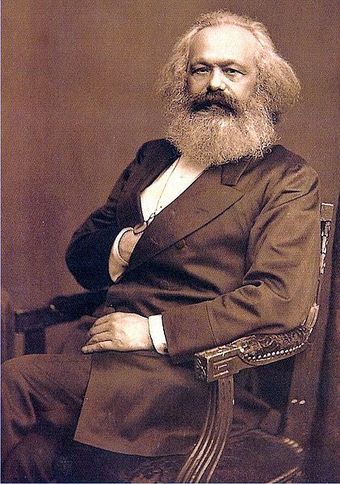
Portrait of Karl Marx
The nineteeth-century German intellectual Karl Marx identified and described the alienation that afflict the worker under capitalism.
Michel Foucault
Michel Foucault believed that torture had been phased out from modern society due to the dispersion of power; so there was no need any more for the wrath of the state on a deviant individual. Rather, the modern state receives praise for its fairness and dispersion of power that, instead of controlling each individual, controls the mass. He also theorized that institutions control people through the use of discipline. The modern prison is a template for these institutions, because it controls its inmates by the perfect use of discipline. Foucault theorizes that, in a sense, the contemporary society is characterized by the lack of free will on the part of individuals. Institutions of knowledge, norms, and values, are in place to categorize and control humans.

Drawing of Michel Foucault
The French philosopher Michel Foucault theorized that institutions control people through the use of discipline.
7.5.2: Class, Crime, and the Criminal Justice System
Class structure within the criminal justice system helps determine the types of crimes individuals will commit.
Learning Objective
Explain why white-collar crime is less likely to be tracked in the U.S.
Key Points
- In Marxist theory, the class structure of the capitalist mode of production is characterized by the conflict between two main classes.
- Bourgeoisie are the capitalists who own the means of production, while the much larger proletariat who must sell their own labor power.
- White-collar crime is a financially motivated, nonviolent crime committed for illegal monetary gain.
- Criminal justice is the system of practices and institutions of governments directed at upholding social control, deterring, and mitigating crime or sanctioning those who violate laws with criminal penalties and rehabilitation efforts.
- Criminal justice is the system of practices and institutions of governments directed at upholding social control, deterring and mitigating crime, or sanctioning those who violate laws with criminal penalties and rehabilitation efforts.
- There are four jurisdictions for punishment: retribution, deterrence, rehabilitation, and societal protection.
- Courts rely on an adversarial process in which attorneys-one representing the defendant and one representing the crown-present their cases in the presence of a judge who monitors legal procedures
- There are four jurisdictions for punishment: retribution, deterrence, rehabilitation, and societal protection.
Key Terms
- plea bargain
-
An agreement in which a defendant agrees to plead guilty to a lesser charge instead of not guilty to a greater one
- Marxist Theory
-
An economic and sociopolitical worldview and method of socioeconomic inquiry centered upon a materialist interpretation of history, a dialectical view of social change, and an analysis–critique of the development of capitalism.
- white-collar crime
-
A non-violent crime, generally for personal gain and often involving money.
Example
- For instance someone committing a white collar crime is most likely from the higher classes and is less likely to be reported or punish.
Of the classical founders of social science, conflict theory is most commonly associated with Karl Marx. Based on a dialectical materialist account of history, Marxism posited that capitalism, like previous socioeconomic systems, would inevitably produce internal tensions leading to its own destruction. Marx ushered in radical change, advocating proletarian revolution and freedom from the ruling classes. In Marxist theory, the class structure of the capitalist mode of production is characterized by the conflict between two main classes: the bourgeoisie, the capitalists who own the means of production, and the much larger proletariat who must sell their own labor power.
Theory of Deviance
Clifford Shaw and Henry D. McKay theorized that social disorganization was a root cause of deviancy and crime, especially for minority youth. They discussed the fact that inner city kids tended to be more involved in a criminal lifestyle than kids who lived in the suburbs. Being able to afford to live in better parts of the city (and thus having wealth) afforded certain kids better opportunities in terms of lifestyle and education, leading to less crime and criminal involvement.
White-Collar Crime
White-collar crime is a financially motivated, nonviolent crime committed for illegal monetary gain. Within the field of criminology, white-collar crime initially was defined by sociologist Edwin Sutherland in 1939 as “a crime committed by a person of respectability and high social status in the course of his occupation. ” A clear example of how deviance reflects power imbalances is in the reporting and tracking of crimes. Indeed, white-collar crimes are typically committed by individuals in higher social classes. That white-collar crimes are less likely to be tracked, less likely to be reported, less likely to be prosecuted, and are more likely to be committed by people in higher social classes suggests that the way crimes are punished in the United States tends to favor the affluent while punitively punishing the less affluent. Additionally, men benefit more from white-collar crime than do women, as they are more likely to attempt these crimes when they are in more powerful positions, allowing them to reap greater rewards.
The Criminal Justice System
Criminal justice is the system of practices and institutions of governments directed at upholding social control, deterring and mitigating crime, or sanctioning those who violate laws with criminal penalties and rehabilitation efforts. Those accused of crime have protections against abuse of investigatory and prosecution powers.
Within the criminal justice system, there are three basic elements that constitute it: the police, the courts, and punishment. The police maintain public order by enforcing the law. Police use personal discretion in deciding whether and how to handle a situation. Research suggests that police are more likely to make an arrest if the offense is serious, if bystanders are present, or if the suspect is of a visible minority. Courts rely on an adversarial process in which attorneys-one representing the defendant and one representing the crown-present their cases in the presence of a judge who monitors legal procedures. In practice, courts resolve most cases through a plea bargain. Though efficient, this method puts less-powerful people at a disadvantage. There are four jurisdictions for punishment: retribution, deterrence, rehabilitation, and societal protection. Community-bases corrections include probation and parole. These programs lower the cost of supervising people convicted of crimes and reduce prison overcrowding but have not been shown to reduce recidivism.
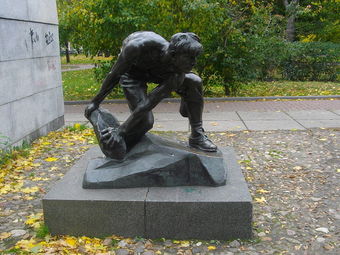
Stone as a Weapon of the Proletariat
In Marxist theory, the class structure of the capitalist mode of production is characterized by the conflict between two main classes: the bourgeoisie, the capitalists who own the means of production, and the much larger proletariat who must sell their own labor power.
7.5.3: Power and Inequality
Power and inequality determine the socioeconomic conditions of different classes.
Learning Objective
Discuss the four basic assumptions of social stratification theory
Key Points
- Social stratification is a concept involving the classification of persons into groups based on shared socioeconomic conditions.
- Conflict theories, such as Marxism, focus on the inaccessibility of resources and lack of social mobility found in stratified societies.
- Social stratification has been shown to cause many social problems, including homicide, infant mortality, obesity, teenage pregnancies, emotional depression, teen suicide, and a high prison population.
- In modern Western societies, stratification is broadly organized into three main layers: upper class, middle class, and lower class.
- Conflict theories, such as Marxism, point to the inaccessibility of resources and lack of social mobility found in stratified societies.
- In Marxist theory, the capitalist mode of production consists of two main economic parts: the substructure and the Superstructure. Marx
- Social stratification has been shown to cause many social problems.
Key Terms
- Marxist Theory
-
An economic and sociopolitical worldview and method of socioeconomic inquiry centered upon a materialist interpretation of history, a dialectical view of social change, and an analysis–critique of the development of capitalism.
- Conflict Theories
-
Perspectives in social science that emphasize the social, political, or material inequality of a social group, critique the broad socio-political system, or otherwise detract from structural functionalism and ideological conservatism.
- Weberian
-
Of or relating to Max Weber (1864–1920), influential German sociologist and political economist.
Example
- According to the book Who Rules America? by William Domhoff, the distribution of wealth in America is the primary highlight of the influence of the upper class. The top 1 percent of Americans own around 34 percent of the wealth in the U.S. while the bottom 80 percent own only approximately 16 percent of the wealth. This large disparity displays the unequal distribution of wealth in America in absolute terms.
Power and Inequality
In social science and politics, power is the ability to influence the behavior of people. The term authority is often used for power perceived as legitimate by the social structure. Power can be seen as evil or unjust, but the exercise of power is accepted as endemic to (or regularly found in) humans as social beings. French philosopher Michel Foucault (1926–1984) saw power as “a complex strategic situation in a given society social setting”. Power may be held through authority, social class (material wealth), personal charisma, expertise or knowledge, persuasion, force (such as law or violence), and a myriad of other dynamics.
Because power operates both relationally and reciprocally, sociologists speak of the balance of power between people in a relationship. All parties to all relationships have some power; the sociological examination of power concerns itself with discovering and describing the relative strengths – equal or unequal, stable or subject to periodic change. Given that power is not innate and can be granted to others, to acquire power you must possess or control a form of power currency (such as wealth, social status, authority, etc.).
Social inequality and stratification
Social inequality refers to relational processes in society that have the effect of limiting or harming a group’s social status, social class, and social circle. Areas of social inequality include access to voting rights, freedom of speech and assembly, the extent of property rights and access to education, health care, quality housing, traveling, transportation, vacationing and other social goods and services.
The reasons for social inequality can vary, but are often broad and far reaching. Social inequality can emerge through a society’s understanding of appropriate gender roles, or through the prevalence of social stereotyping. They can also be established through discriminatory legislation. Social inequalities exist between ethnic or religious groups, classes and countries, making the concept a global phenomenon.
In sociology, social stratification is a concept involving the classification of persons into groups based on shared socioeconomic conditions; it is a relational set of inequalities with economic, social, political and ideological dimensions. Theories of social stratification are based on four basic principles:
- Social stratification is a trait of society, not simply a reflection of individual differences.
- Social stratification carries over from generation to generation.
- Social stratification is universal but variable.
- Social stratification involves not just inequality but beliefs as well.
Classifications of stratification
In modern Western societies, stratification is broadly organized into three main layers: upper class, middle class, and lower class.
The upper class in modern societies is the social class composed of the wealthiest members of society, who also wield the greatest political power. The upper class is generally contained within the wealthiest 1–2 percent of the population, with wealth passed from generation to generation.
In Weberian socioeconomic terms, the middle class is the broad group of people in contemporary society who fall socioeconomically between the working class and upper class. The common measures of what constitutes middle class vary significantly between cultures.
The working class describes the group of people employed in lower tier jobs, often including those in unemployment or otherwise possessing below-average incomes. Working classes are mainly found in industrialized economies and in urban areas of non-industrialized economies.
Social Stratification and Marxism
Conflict theories, such as Marxism, focus on the inaccessibility of resources and lack of social mobility found in stratified societies. Many sociological theorists have criticized the extent to which the working classes are unlikely to advance socioeconomically; the wealthy tend to hold political power which they use to exploit the proletariat inter-generationally.
In Marxist theory, the capitalist mode of production consists of two main economic parts: the substructure and the superstructure. Marx saw classes as defined by people’s relationship to the means of productions in two basic ways: either they own productive property or they labor for others. The base comprehends the forces and relations of production: employer-employee work conditions, the technical division of labor, and property relations—into which people enter to produce the necessities and amenities of life. These relations determine society’s other relationships and ideas, which are described as its superstructure. The superstructure of a society includes its culture, institutions, political power structures, roles, rituals, and state.
Social stratification has been shown to cause many social problems. A comprehensive study of major world economies revealed that homicide, infant mortality, obesity, teenage pregnancies, emotional depression, teen suicide, and prison population all correlate with higher social inequality.
There are three common characteristics of stratified systems:
- Rankings apply to social categories of people who share a common characteristic without necessarily interacting or identifying with each other. The process of being ranked can be changed by the person being ranked, and it can differ based on race, gender, and social class.
- People’s life experiences and opportunities depend on their social category. This characteristic can be changed by the amount of work a person can put into their interests. The use of resources can influence others.
- The ranks of different social categories change slowly over time. This has occurred frequently in the United States ever since the American revolution—the U.S. Constitution has been altered several times to specify rights for everyone.
7.5.4: The Law as an Instrument of Oppression
Oppression is the exercise of authority or power in a burdensome, cruel, or unjust manner.
Learning Objective
Describe the sociological approach to oppression
Key Points
- Anarchists and other libertarian socialists argue that police and law themselves are oppression. The term oppression, in such instances, refers to the subordination of a given group or social category by unjust use of force or authority in order to achieve the effects of oppression.
- In psychology, racism, sexism and other prejudices are often studied as individual beliefs which, although not necessarily oppressive in themselves, can lead to oppression if they are codified in law or become parts of a culture.
- In sociology, prejudices are often studied as being institutionalized systems of oppression in some societies.
- In sociology and psychology, internalized oppression is the manner in which an oppressed group comes to use against itself the methods of the oppressor.
Key Terms
- anarchist
-
One who believes in or advocates the absence of hierarchy and authority in most forms (compare anarchism), especially one who works toward the realization of such.
- prejudice
-
An adverse judgment or opinion formed beforehand or without knowledge of the facts.
Example
- When the state’s laws are considered unjust, social and political revolutions are created by men and women seeking freedom and justice.
Oppression is the exercise of authority or power in a burdensome, cruel, or unjust manner. It can also be defined as an act or instance of oppressing, the state of being oppressed, and the feeling of being heavily burdened, mentally or physically, by troubles, adverse conditions, and anxiety. Injustice refers to the absence of justice. The term may be applied either in reference to a particular event or act, or to a larger status quo. The term generally refers to misuse, abuse, neglect, or malfeasance that is uncorrected or otherwise sanctioned by a legal system. Misuse and abuse with regard to a particular case or context may represent a systemic failure to serve the cause of justice.
Anarchists and other libertarian socialists argue that police and laws themselves are oppression. The term oppression, in such instances, refers to the subordination of a given group or social category by unjust use of force, authority, or societal norms in order to achieve the effects mentioned above. When institutionalized, formally or informally, it may achieve the dimension of systematic oppression. Oppression is customarily experienced as a consequence of, and expressed in, the form of a prevailing, if unconscious, assumption that the given target is in some way inferior. Oppression is rarely limited solely to formal government action: An individual may be the particular focus of oppression or persecution, and in such circumstances, have no group membership in which to share, and thus maybe mitigate the burden of ostracism.
In psychology, racism, sexism and other prejudices are often studied as individual beliefs which, although not necessarily oppressive in themselves, can lead to oppression if they are codified in law or become parts of a culture. By comparison, in sociology, these prejudices are often studied as being institutionalized systems of oppression in some societies. In sociology, the tools of oppression include a progression of denigration, dehumanization, and demonization which often generate scapegoating, which is used to justify aggression against targeted groups and individuals.
In sociology and psychology, internalized oppression is the manner in which an oppressed group comes to use against itself the methods of the oppressor. For example, sometimes members of marginalized groups hold an oppressive view toward their own group, or start to believe in negative stereotypes.
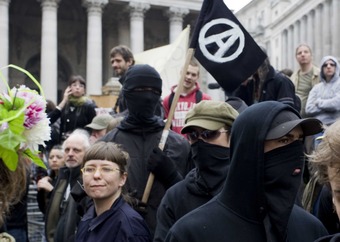
Anarchists at the G20 Summit in London, 2009
Sometimes the oppressed unite to fight back against the oppressors.
7.6: The Symbolic-Interactionalist Perspective on Deviance
7.6.1: Differential Association Theory
Differential association is when individuals base their behaviors by association and interaction with others.
Learning Objective
List Sutherland’s nine key points
Key Points
- In criminology, differential association is a theory developed by Edwin Sutherland.
- Differential association theory proposes that through interaction with others, individuals learn the values, attitudes, techniques, and motives for criminal behavior.
- Differential association predicts that an individual will choose the criminal path when the balance of definitions for law-breaking exceeds those for law-abiding.
- One critique leveled against differential association stems from the idea that people can be independent, rational actors and individually motivated.
Key Terms
- differential association
-
a theory in criminology developed by Edwin Sutherland, proposing that through interaction with others, individuals learn the values, attitudes, techniques, and motives for criminal behavior
- Differential Association Theory
-
This theory predicts that an individual will choose the criminal path when the balance of definitions for law-breaking exceeds those for law-abiding.
- Edwin Sutherland
-
Considered as one of the most influential criminologists of the 20th century. He was a sociologist of the symbolic interactionist school of thought and is best known for defining white-collar crime and differential association—a general theory of crime and delinquency.
In criminology, differential association is a theory developed by Edwin Sutherland (1883–1950) proposing that through interaction with others, individuals learn the values, attitudes, techniques, and motives for criminal behavior. Differential association theory is the most talked-about of the learning theories of deviance. This theory focuses on how individuals learn to become criminals, but it does not concern itself with why they become criminals.
Differential association predicts that an individual will choose the criminal path when the balance of definitions for law-breaking exceeds those for law-abiding. This tendency will be reinforced if social association provides active people in the person’s life. The earlier in life an individual comes under the influence high status people within a group, the more likely the individual is to follow in their footsteps. This does not deny that there may be practical motives for crime. If a person is hungry but has no money, there is a temptation to steal. But the use of “needs” and “values” is equivocal. To some extent, both non-criminal and criminal individuals are motivated by the need for money and social gain.
Sutherland’s Nine Points
The principles of Sutherland’s theory of differential association can be summarized into nine key points.
- Criminal behavior is learned.
- Criminal behavior is learned in interaction with other persons in a process of communication.
- The principal part of the learning of criminal behavior occurs within intimate personal groups.
- When criminal behavior is learned, the learning includes techniques of committing the crime (which are sometimes very complicated, sometimes simple) and the specific direction of motives, drives, rationalizations, and attitudes.
- The specific direction of motives and drives is learned from definitions of the legal codes as favorable or unfavorable.
- A person becomes delinquent because of an excess of definitions favorable to violation of law over definitions unfavorable to violation of the law.
- Differential associations may vary in frequency, duration, priority, and intensity.
- The process of learning criminal behavior by association with criminal and anti-criminal patterns involves all of the mechanisms that are involved in any other learning.
- While criminal behavior is an expression of general needs and values, it is not explained by those needs and values, since non-criminal behavior is an expression of the same needs and values.
An important quality of differential association theory is the frequency and intensity of interaction. The amount of time that a person is exposed to a particular definition and at what point the interaction began are both crucial for explaining criminal activity. The process of learning criminal behavior is really not any different from the process involved in learning any other type of behavior. Sutherland maintains that there is no unique learning process associated with acquiring non-normative ways of behaving.
One very unique aspect of this theory is that it works to explain more than just juvenile delinquency and crime committed by lower class individuals. Since crime is understood to be learned behavior, the theory is also applicable to white-collar, corporate, and organized crime.
One critique leveled against differential association stems from the idea that people can be independent, rational actors and individually motivated. This notion of one being a criminal based on his or her environment is problematic—the theory does not take into account personality traits that might affect a person’s susceptibility to these environmental influences.

Criminal Silhouette
Differential association theory predicts that an individual will choose the criminal path when the balance of definitions for law-breaking exceeds those for law-abiding.
7.6.2: Control Theory
Control theory explains that societal institutions without strong control of society can result in deviant behavior.
Learning Objective
Identify the central assumption of control theory
Key Points
- Control theory advances the proposition that weak bonds between the individual and society allow people to deviate. Establishing strong social bonds, such as family ties or close community groups, will prevent crime.
- According to Travis Hirschi, people will conform to a group when they believe they have more to gain from conformity than by deviance.
- Decentralized control or market control is typically maintained through factors such as price, competition, or market share.
- Centralized control such as bureaucratic control is typically maintained through administrative or hierarchical techniques such as creating standards or policies.
- Mixed control is typically maintained by keeping a set of values and beliefs or norms and traditions.
- Mixed control is typically maintained by keeping a set of values and beliefs or norms and traditions.
Key Terms
- deviance
-
Actions or behaviors that violate formal and informal cultural norms, such as laws or the norm that discourages public nose-picking.
- control theory
-
The theory states that behavior is caused not by outside stimuli, but by what a person wants most at any given time. According to control theory, weak social systems result in deviant behavior.
Control theory advances the proposition that weak bonds between the individual and society allow people to deviate. In other words, deviant behavior occurs when external controls on behavior are weak. If the individual has strong social bonds with positive influences, deviant behavior is less likely than for another individual who has no family or friends.
Social Bonds
According to Travis Hirschi, norms emerge to deter deviant behavior, leading to conformity and groups. People will conform to a group when they believe they have more to gain from conformity than by deviance. Hirschi argued a person follows norms because they have a bond with society. These social bonds have four elements: opportunity, attachment, belief, and involvement. When any one of these bonds are weakened or broken a person is more likely to act in defiance.
Control Theory in sociology can either be classified as centralized, decentralized, or mixed. Decentralized control, or market control, is typically maintained through factors such as price, competition, or market share. Centralized control, such as bureaucratic control, is typically maintained through administrative or hierarchical techniques that create standards or policies. An example of mixed control is clan control, which contains both centralized and decentralized control. Mixed control is typically maintained by establishing a set of values and beliefs or norms and traditions.
Critique
While control theory gives an adequate explanation of non-serious forms of youthful delinquency, it fails to explain adult criminal behavior and serious instances of youth crime. Moreover, control theory is met with some resistance for its compliance to a conservative view of the broader social order. From a control theory perspective, children who are properly bonded to their parents would be involved in less crime than children who have weaker parental bonds; control theory assumes that the family is a naturally law-abiding institution. The theory’s biggest weakness is that it places too much importance on the bonds relative to an individual and society, without looking at other concepts like autonomy and impulsiveness.
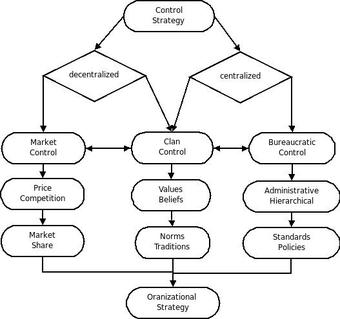
Control Strategy
Control theory advances the proposition that weak bonds between the individual and society allow people to deviate.
7.6.3: Labeling Theory
Labeling theory holds that deviance is not inherent to an act, but instead the result of the externally-imposed label of “deviant”.
Learning Objective
Describe the labeling theory approach to deviance
Key Points
- George Herbert Mead posited that the self is socially constructed and reconstructed through the interactions which each person has with the community. Thus, if the community labels an individual as “deviant”, the individual will integrate this label into his sense of self.
- A social role is a set of expectations we have about a behavior. They are necessary for the organization and functioning of any society or group.
- Deviant roles are very special roles that society provides for deviant behavior.
- Mental illness and homosexuality are two examples of labels given to individual displaying deviant behavior.
- People who believe in hard labeling believe that mental illness does not exist. According to them, these illnesses are entirely socially constructed when we attach the label “mentally ill” to a behavior.
- Soft labeling supporters believe that mental illnesses are not socially constructed.
- People who believe in hard labeling believe that mental illness does not exist – they are entirely socially constructed.
- Soft labeling supporters believe that mental illnesses are not socially constructed.
Key Terms
- social role
-
Labeling theory concerns itself mostly not with the normal roles that define our lives, but with those very special roles that society provides for deviant behavior, called deviant roles, stigmatic roles, or social stigma.
- Deviant roles
-
Labeling theory concerns itself mostly not with the normal roles that define our lives, but with those very special roles that society provides for deviant behavior.
- Labeling theory
-
Labeling theory is closely related to social-construction and symbolic-interaction analysis.
Example
- Social roles are necessary for the organization and functioning of any society or group. We expect the postman, for example, to adhere to certain fixed rules about how he does his job.
Labeling Theory
Labeling theory is closely related to social-construction and symbolic-interaction analysis. It holds that deviance is not an inherent tendency of an individual, but instead focuses on the tendency of majorities to negatively label minorities or those seen as deviant from standard cultural norms. The theory is concerned with how the self-identity and the behavior of individuals may be determined or influenced by the terms used to describe or classify them. The theory was prominent during the 1960s and 1970s, and some modified versions of the theory are still popular today .
Theoretical Origins
Labeling theory had its origins in Suicide, a book by French sociologist Émile Durkheim. He argued that crime is not so much a violation of a penal code as it is an act that outrages society. He was the first to suggest that deviant labeling satisfies that function and satisfies society’s need to control the behavior. George Herbert Mead posited that the self is socially constructed and reconstructed through the interactions which each person has with the community. The labeling theory suggests that people are given labels based on how others view their tendencies or behaviors. Each individual is aware of how they are judged by others because he or she has adopted many different roles and functions in social interactions and has been able to gauge the reactions of those present.
Social Roles
Labeling theory concerns itself not with the normal roles that define our lives, but with those very special roles that society provides for deviant behavior, called deviant roles, stigmatic roles, or social stigma. A social role is a set of expectations we have about a behavior. Social roles are necessary for the organization and functioning of any society or group. We expect the postman, for example, to adhere to certain fixed rules about how he does his job.
Labeling theory hypothesizes that the labels applied to individuals influence their behavior, particularly that the application of negative or stigmatizing labels promotes deviant behavior. They become a self-fulfilling prophecy: an individual who is labeled has little choice but to conform to the essential meaning of that judgment. Consequently, labeling theory postulates that it is possible to prevent social deviance via a limited social shaming reaction in “labelers” and replace moral indignation with tolerance .
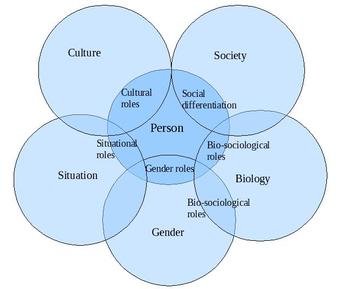
Social roles
. A social role is a set of expectations we have about a behavior. Social roles are necessary for the organization and functioning of any society or group.
Labeling Deviants
The social construction of deviant behavior plays an important role in the labeling process that occurs in society. This process involves not only the labeling of criminally deviant behavior, which is behavior that does not fit socially constructed norms, but also labeling that reflects stereotyped or stigmatized behavior of the “mentally ill.” Furthermore, the application of labeling theory to homosexuality has been extremely controversial. It was Alfred Kinsey and his colleagues who pointed out the big discrepancy between the behavior and the role attached to it.
Hard Labeling and Soft Labeling
There are two distinctions in labeling: hard labeling and soft labeling. People who believe in hard labeling believe that mental illness does not exist. It is merely deviance from the norms of society that people attribute to mental illness. Thus, mental illnesses are socially constructed illnesses and psychotic disorders do not exist. People who believe in soft labeling believe that mental illnesses do, in fact, exist. Unlike the supporters of hard labeling, soft labeling supporters believe that mental illnesses are not socially constructed but are objective problems.
7.7: Crime
7.7.1: Crime
Crime is the breach of rules or laws for which some governing authority can ultimately prescribe a conviction.
Learning Objective
Relate cultural change to changing definitions of crime
Key Points
- While every crime violates the law, not every violation of the law counts as a crime. Breaches of contract and of other civil law may rank as “offenses” or as “infractions. ” Torts are wrongs against private parties that can give rise to a civil cause of action.
- In sociology, a normative definition views crime as deviant behavior that violates prevailing norms, or cultural standards prescribing how humans ought to behave normally.
- Criminalization is a procedure deployed by society as a pre-emptive, harm-reduction device, using the threat of punishment as a deterrent to anyone proposing to engage in the behavior causing harm.
- As cultures change and the political environment shifts, societies may criminalize or decriminalize certain behaviors, which directly affects crime statistics and social perception of crime and deviant behavior..
- Criminology is the scientific study of the nature, extent, causes, and control of criminal behavior in both the individual and in society.
- As cultures change and the political environment shifts, societies may criminalize or decriminalize certain behaviors, which directly affects the crime statistics.
- Crime statistics refers to the collection and calculation on data on crime in a given location.
- Criminology is the scientific study of the nature, extent, causes, and control of criminal behavior in both the individual and in society.
Key Terms
- Breaches of Contract
-
An action in which a binding agreement or bargained-for exchange is not honored by one or more of the parties to the contract by non-performance or interference with the other party’s performance.
- Deviant Behavior
-
The violation of prevailing norms or cultural standards prescribing how humans ought to behave.
- criminalization
-
The act of making a previously legal activity illegal.
Crime is the breach of rules or laws for which some governing authority can ultimately prescribe a conviction. Crimes may also result in cautions, rehabilitation, or be unenforced. Individual human societies may each define crime and crimes differently, in different localities, and at different time stages of the crime. While every crime violates the law, not every violation of the law counts as a crime; for example, breaches of contract and of other civil law may rank as “offenses” or as “infractions. ” Modern societies generally regard crimes as offenses against the public or the state, as distinguished from torts, which are wrongs against private parties that can give rise to a civil cause of action.
In sociology, a normative definition views crime as deviant behavior that violates prevailing norms, or cultural standards prescribing how humans ought to behave normally. This approach considers the complex realities surrounding the concept of crime and seeks to understand how changing social, political, psychological, and economic conditions may affect changing definitions of crime and the form of the legal, law-enforcement, and penal responses made by society.
These structural realities remain fluid and often contentious. For example: as cultures change and the political environment shifts, societies may criminalize or decriminalize certain behaviors, which directly affects the statistical crime rates, influences the allocation of resources for the enforcement of laws, and re-influences the general public opinion. One can view criminalization as a procedure deployed by society as a pre-emptive, harm-reduction device, using the threat of punishment as a deterrent to anyone proposing to engage in the behavior causing harm. The state becomes involved because governing entities can become convinced that the costs of not criminalizing, through allowing the harms to continue unabated, outweigh the costs of criminalizing it, restricting individual liberty, for example, to minimize harm to others.
Similarly, changes in the collection and calculation of data on crime may affect the public perceptions of the extent of any given “crime problem.” All such adjustments to crime statistics, together with the experience of people in their everyday lives, shape attitudes on the extent to which the state should use law or social engineering to enforce or encourage any particular social norm. Criminology is the scientific study of the nature, extent, causes, and control of criminal behavior in both the individual and in society.
7.7.2: Types of Crime
Criminal law, as opposed to civil law, is the body of law that relates to crime and that defines conduct that is not allowed.
Learning Objective
Identify and differentiate between different types of crimes
Key Points
- In criminal law, an offense against the person usually refers to a crime which is committed by direct physical harm or force being applied to another person.
- A violent crime is a crime in which the offender uses or threatens to use violent force upon the victim.
- Sex crimes are forms of human sexual behavior that are crimes. Someone who commits one is said to be a sex offender.
- Property crime involves the taking of money or property, and does not involve force or threat of force against a victim.
- Hate crimes occur when a perpetrator targets a victim because of his or her perceived membership in a certain social group, usually defined by racial group, religion, sexual orientation, disability, class, ethnicity, nationality, age, sex, or gender identity.
- Organized crime is the transnational, national, or local grouping of highly centralized enterprises run by criminals for the purpose of engaging in illegal activity.
- Virtual crime refers to a virtual criminal act that takes place in a massively multiplayer online game (MMOG).
- Organized crime are transnational, national, or local groupings of highly centralized enterprises run by criminals for the purpose of engaging in illegal activity
Key Terms
- Violent Crime
-
A violent crime, or crime of violence, is a crime in which the offender uses or threatens to use violent force upon the victim. This entails both crimes in which the violent act is the objective, such as murder, as well as crimes in which violence is the means to an end, (including criminal ends) such as robbery. Violent crimes include crimes committed with and without weapons.
- organized crime
-
A set of large criminal organizations (often competing for markets and territories) that deal in illegal goods and services.
- Property Crime
-
Property crime is a category of crime that includes, among other crimes, burglary, larceny, theft, motor vehicle theft, arson, shoplifting, and vandalism. Property crime only involves the taking of money or property, and does not involve force or threat of force against a victim.
Example
- Sex crimes are forms of human sexual behavior that are crimes. Someone who commits one is said to be a sex offender. Some sex crimes are crimes of violence that involve sex.
Criminal law, as opposed to civil law, is the body of law that relates to crime. It could be defined as the body of rules that defines conduct that is not allowed because it is held to threaten, harm or endanger the safety and welfare of people, and that sets out the punishment to be imposed on people who do not obey these laws. Criminal law is distinctive for the uniquely serious potential consequences, or sanctions, for failure to abide by its rules.
Offenses Against the Person
In criminal law, an offense against the person usually refers to a crime which is committed by direct physical harm or force being applied to another person. They are usually analyzed by division into fatal offenses, sexual offenses, or non-fatal non-sexual offenses. Although most sexual offenses will also be offenses against the person, sexual crimes are usually categorized separately. Similarly, although many homicides also involve an offense against the person, they are usually categorized under the more serious category.
Violent Crimes
A violent crime is a crime in which the offender uses or threatens to use violent force upon the victim. Violent crimes include crimes committed with and without weapons. They also include both crimes in which the violent act is the objective, such as murder, as well as crimes in which violence is the means to an end, such as robbery. The United States Department of Justice Bureau of Justice Statistics (BJS) counts five categories of crime as violent crimes: murder, forcible rape, robbery, aggravated assault, and simple assault. According to BJS figures, the rate of violent crime victimization in the United States declined by more than two thirds between the years 1994 and 2009. On September 30, 2009, 7.9% of sentenced prisoners in federal prisons were in for violent crimes; 52.4% of sentenced prisoners in state prisons at yearend 2008 were in for violent crimes; and 21.6% of convicted inmates in jails in 2002 were in for violent crimes.
Sex Crimes
Sex crimes are forms of human sexual behavior that are crimes. Someone who commits one is said to be a sex offender. Some sex crimes are crimes of violence that involve sex. Others are violations of social taboos, such as incest, sodomy, indecent exposure or exhibitionism. There is much variation among cultures as to what is considered a crime or not, and in what ways or to what extent crimes are punished.
Property Crimes
Property crime is a category of crime that includes burglary, larceny, theft, motor vehicle theft, arson, shoplifting, and vandalism. Property crime only involves the taking of money or property, and does not involve force or threat of force against a victim. Although robbery involves taking property, it is classified as a violent crime, since force, or threat of force, on an individual is involved, in contrast to burglary which typically takes place in an unoccupied dwelling or other unoccupied building. In 2005, only 18% of reported cases of larceny/theft were cleared in the United States.
Hate Crimes
Hate crimes occur when a perpetrator targets a victim because of his or her perceived membership in a certain social group, usually defined by racial group, religion, sexual orientation, disability, class, ethnicity, nationality, age, sex, or gender identity.
Virtual Crimes
Virtual crime refers to a virtual criminal act that takes place in a massively multiplayer online game (MMOG). The huge time and effort invested into such games can lead online “crime” to spill over into real world crime, and even blur the distinctions between the two. Some countries have introduced special police investigation units to cover such “virtual crimes. ” South Korea is one such country, and looked into 22,000 cases in the first six months of 2003.
Organized Crime
Organized crime is the transnational, national, or local grouping of highly centralized enterprises run by criminals for the purpose of engaging in illegal activity, most commonly for monetary profit. Sometimes criminal organizations force people to do business with them, as when a gang extorts money from shopkeepers for “protection. ” An organized gang or criminal set can also be referred to as a mob.

Handcuffs
Handcuffs pictured on the ground outside the courthouse
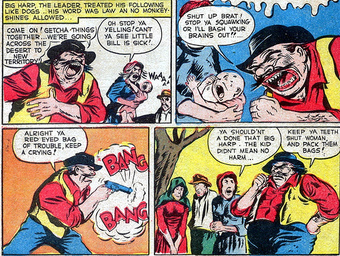
Crime Does Not Pay: Shooting a Baby
“Crime Does Not Pay” was one of the primary targets of Dr. Fredrick Wertham’s crusade against comics books, and were often cited in his writing and during the Senate inquiries into the comic book industries corruption of the innocent. The general theme of “Crime Does Not Pay” is exactly what the title of the series suggests – criminals rise to power, but come to an often violent end. This panel is from issue 22 of the series.

Crime Dog
Anti-crime campaign using the crime dog cartoon
7.7.3: Crime Statistics
Crime statistics attempt to provide statistical measures of the crime in societies.
Learning Objective
Evaluate U.S. crime statistics and the various ways law enforcement officials gather them
Key Points
- The two major methods for collecting crime data are law enforcement reports and victimization statistical surveys.
- Statistics from law enforcement organizations are normally readily available and are generally reliable in terms of identifying what crime is being dealt with by law enforcement organizations.
- Victimization surveys are useful because they show some types of crime are well reported to law enforcement officials, while other types of crime are under reported.
- The U.S. has two major data collection programs: the Uniform Crime Reports from the FBI, and the National Crime Victimization Survey from the Bureau of Justice Statistics.
Key Terms
- Crime Statistics
-
The collection and/or calculation of data on crime.
- Uniform Crime Reports
-
The UCR Program is a nationwide, cooperative statistical effort of over 18,000 city, university and college, county, state, tribal, federal, and other law enforcement agencies who voluntarily report data on crimes brought to their attention.
- crime
-
a specific act committed in violation of the law
- Victimization Statistical Surveys
-
The survey results are used for the purposes of building a crime index.
Example
- Research using a series of victim surveys in 18 countries of the European Union in 2005, funded by the European Commission, has reported that the level of crime in Europe has fallen back to the levels of 1990, and notes that levels of common crime have shown declining trends in the U.S., Canada, Australia, and other industrialized countries as well. The European researchers say a general consensus identifies demographic change as the leading cause for this international trend. Although homicide and robbery rates rose in the U.S. in the 1980s, by the end of the century they had declined by 40%.
Crime statistics attempt to provide statistical measures of the crime in societies. Several methods for measuring crime exist, including household surveys, hospital or insurance records, and compilations by police and similar law enforcement agencies. Typically official crime statistics refer to the latter, but some offences are likely to go unreported to the police. Public surveys are sometimes conducted to estimate the amount of crime not reported to police. Given that crime is usually secretive by nature, measurements of it are likely to be inaccurate. The two major methods for collecting crime data are law enforcement reports and victimization statistical surveys.
Crime statistics are gathered and reported by many countries and are of interest to several international organizations, including Interpol and the United Nations. Law enforcement agencies in some countries, such as the Federal Bureau of Investigation (FBI) in the United States and the Home Office in England & Wales, publish crime indices, which are compilations of statistics for various types of crime. The U.S. has two major data collection programs: the Uniform Crime Reports from the FBI and the National Crime Victimization Survey from the Bureau of Justice Statistics. The National Crime Victimization Survey has its use, but it also limited in its scope. For example, it only collects data on the following crimes – assault, burglary, larceny, motor vehicle theft, rape and robbery. The U.S. has no comprehensive infrastructure to monitor crime trends and report the information to related parties, such as law enforcement.
Crime can generally be broken down into 2 categories – violent and nonviolent. Violent crimes involve harm to another person, generally done intentionally. The seriousness of the crime is determined by the amount of harm; use of a weapon also increases the seriousness. By contrast, nonviolent crime involves harm to property and/or possessions. Fraud or certain drug charges are examples of nonviolent crimes.
Because of the difficulties in quantifying how much crime actually occurs, researchers generally take two approaches to gathering statistics about crime. First, they often use statistics from law enforcement organizations. These statistics are normally readily available and are generally reliable in terms of identifying what crime is being dealt with by law enforcement organizations, as they are gathered by law enforcement officers in the course of their duties, and are often extracted directly from law enforcement computer systems. However, these statistics often tend to reflect the productivity and law enforcement activities of the officers concerned, and may bear little relationship to the actual amount of crime. One way in which victimization surveys are useful is that they show some types of crime are well reported to law enforcement officials, while other types of crime are under reported. These surveys also give insights as to why crime is reported, or not. This allows degrees of confidence to be assigned to various crime statistics.
Research using a series of victim surveys in 18 countries of the European Union in 2005, funded by the European Commission, has reported that the level of crime in Europe has fallen back to the levels of 1990, and notes that levels of common crime have shown declining trends in the U.S., Canada, Australia and other industrialized countries as well. The European researchers say a general consensus identifies demographic change as the leading cause for this international trend. Although homicide and robbery rates rose in the U.S. in the 1980s, by the end of the century they had declined by 40%.

FBI Seal
The U.S. has two major data collection programs: the Uniform Crime Reports from the FBI, and the National Crime Victimization Survey from the Bureau of Justice Statistics.
7.7.4: Juvenile Crime
Juvenile delinquency is participation in illegal behaviors by minors. A juvenile delinquent is typically under the age of 18.
Learning Objective
Describe the factors that influence the development of delinquency in youth and the ways the legal system deals with this delinquency
Key Points
- A juvenile delinquent is a person who is typically under the age of 18 and commits an act that otherwise would have been charged as a crime had they been an adult.
- There are three categories of juvenile delinquency: delinquency, criminal behavior, and status offenses. Delinquency includes crimes committed by minors which are dealt with by the juvenile courts and justice system.
- Criminal behavior are crimes dealt with by the criminal justice system.
- Status offenses are offenses which are only classified as such because the person is a minor; they also dealt with by the juvenile courts.
- Poverty is a large predictor of low parental monitoring, harsh parenting, and association with deviant peer groups, all of which are in turn associated with juvenile offending. Family factors also have an influence on delinquency.
- Delinquency prevention is the broad term for all efforts aimed at preventing youth from becoming involved in criminal or other antisocial activity.
- Poverty is a large predictor of low parental monitoring, harsh parenting, and association with deviant peer groups, all of which are in turn associated with juvenile offending.
- Family factors which may have an influence on offending include: the level of parental supervision, the way parents discipline a child, particularly harsh punishment, parental conflict or separation, criminal parents or siblings, parental abuse or neglect, and the quality of the parent-child relationship
- Delinquency prevention is the broad term for all efforts aimed at preventing youth from becoming involved in criminal, or other antisocial, activity.
Key Terms
- Status Offenses
-
A status offense is an action that is prohibited only to a certain class of people, and most often applied to offenses only committed by minors.
- Delinquency Prevention
-
Delinquency prevention is the broad term for all efforts aimed at preventing youth from becoming involved in criminal or other antisocial activity. Prevention services may include activities such as substance abuse education and treatment, family counseling, youth mentoring, parenting education, educational support, and youth sheltering. Increasing availability and use of family planning services, including education and contraceptives helps to reduce unintended pregnancy and unwanted births, which are risk factors for delinquency.
- juvenile delinquency
-
Participation in illegal behaviour by minors.
Example
- According to a study led by Florida State University criminologist Kevin M. Beaver, adolescent males who possess a certain type of variation in a specific gene are more likely to flock to delinquent peers. The study, which appeared in the September 2008 issue of the Journal of Genetic Psychology, is the first to establish a statistically significant association between an affinity for antisocial peer groups and a particular variation (called the 10-repeat allele) of the dopamine transporter gene (DAT1).
Juvenile Delinquency
Juvenile delinquency is participation in illegal behavior by minors. Most legal systems prescribe specific procedures for dealing with juveniles, such as juvenile detention centers and courts. A juvenile delinquent is a person who is typically under the age of 18 and commits an act that would have otherwise been charged as a crime if the minor was an adult. Depending on the type and severity of the offense committed, it is possible for persons under 18 to be charged and tried as adults.
Juvenile delinquency can be separated into three categories:
- Delinquency: crimes committed by minors that are dealt with by the juvenile courts and justice system;
- Criminal behavior: crimes dealt with by the criminal justice system;
- Status offenses: offenses which are only classified as such because one is a minor, such as truancy, also dealt with by the juvenile courts.
Young men disproportionately commit juvenile delinquency. Feminist theorists and others have examined why this is the case. One suggestion is that ideas of masculinity may make young men more likely to offend. Being tough, powerful, aggressive, daring, and competitive becomes a way for young men to assert and express their masculinity. Alternatively, young men may actually be naturally more aggressive, daring, and prone to risk-taking. According to a study led by Florida State University criminologist Kevin M. Beaver, adolescent males who possess a certain type of variation in a specific gene are more likely to flock to delinquent peers. The study, which appeared in the September 2008 issue of the Journal of Genetic Psychology, is the first to establish a statistically significant association between an affinity for antisocial peer groups and a particular variation (called the 10-repeat allele) of the dopamine transporter gene (DAT1).
There is also a significant skew in the racial statistics for juvenile offenders. When considering these statistics, which state that Black and Latino teens are more likely to commit juvenile offenses, it is important to keep the following in mind: poverty is a large predictor of low parental monitoring, harsh parenting, and association with deviant peer groups, all of which are in turn associated with juvenile offending. The majority of adolescents who live in poverty are racial minorities.
Family factors that may have an influence on offending include:
- the level of parental supervision,
- the way parents discipline a child,
- particularly harsh punishment,
- parental conflict or separation,
- criminal parents or siblings,
- parental abuse or neglect,
- the quality of the parent-child relationship.
Delinquency prevention is the broad term for all efforts aimed at preventing youth from becoming involved in criminal or other antisocial activity. Because the development of delinquency in youth is influenced by numerous factors, prevention efforts need to be comprehensive in scope. Prevention services may include activities like substance abuse education and treatment, family counseling, youth mentoring, parenting education, educational support, and youth sheltering. Increasing availability and use of family planning services, including education and contraceptives, helps to reduce unintended pregnancy and unwanted births—which are risk factors for delinquency .
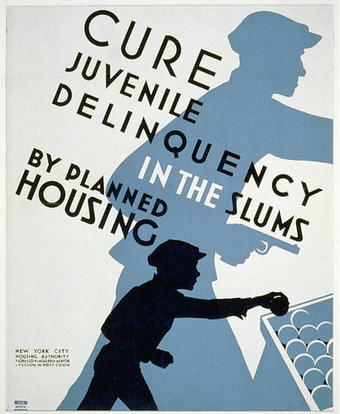
Cure Juvenile Delinquency by Planned Housing
Poster promoting planned housing as a method to deter juvenile delinquency, showing silhouettes of a child stealing a piece of fruit and as an older minor involved in armed robbery.
7.7.5: Violent Crime
A violent crime is a crime in which the offender uses or threatens to use violent force upon the victim.
Learning Objective
Explain how the United States Department of Justice classifies violent crime
Key Points
- The United States Department of Justice Bureau of Justice Statistics (BJS) counts five categories of crime as violent crimes: murder, forcible rape, robbery, aggravated assault, and simple assault.
- Violent crimes include crimes committed with and without weapons. With the exception of rape, males are the primary victims of all forms of violent crime.
- The rate of violent crime victimization in the United States declined by more than two thirds between the years 1994 and 2009.
Key Terms
- Forcible Rape
-
A type of sexual assault usually involving sexual intercourse, which is initiated by one or more persons against another person without that person’s consent.
- aggravated assault
-
Assault with disregard for the value of life, or with a deadly weapon.
- Simple Assault
-
In law, assault is a crime which involves causing a victim to apprehend violence.
Example
- According to the BJS, the rate of violent crime victimization in the United States declined by more than two thirds between the years 1994 and 2009. 7.9% of sentenced prisoners in federal prisons on September 30, 2009 were in for violent crimes; 52.4% of sentenced prisoners in state prisons at yearend 2008 were in for violent crimes; and 21.6% of convicted inmates in jails in 2002 were in for violent crimes.
A violent crime is a crime in which the offender uses or threatens to use violent force upon the victim. This entails both crimes in which the violent act is the objective, such as murder, as well as crimes in which violence is the means to an end, such as robbery. Violent crimes include crimes committed with and without weapons. With the exception of rape (which accounts for 6% of all reported violent crimes), males are the primary victims of all forms of violent crime.
The comparison of violent crime statistics between countries is usually problematic due to the way different countries classify crime. Valid comparisons require that similar offences between jurisdictions be compared. Often this is not possible because crime statistics aggregate equivalent offences in such different ways that make it difficult or impossible to obtain a valid comparison.
The United States Department of Justice Bureau of Justice Statistics (BJS) counts five categories of crime as violent crimes: murder, forcible rape, robbery, aggravated assault, and simple assault. According to the BJS, the rate of violent crime victimization in the United States declined by more than two thirds between the years 1994 and 2009. Nearly 8% of sentenced prisoners in federal prisons on September 30, 2009 were in for violent crimes; 52.4% of sentenced prisoners in state prisons at yearend in 2008 were in for violent crimes; and 21.6% of convicted inmates in jails in 2002 were in for violent crimes.
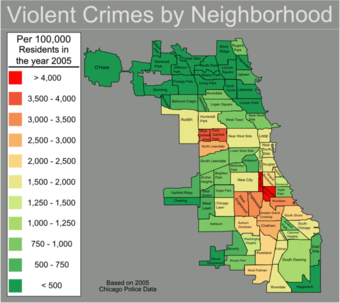
Chicago Violent Crime Map
Map of violent crimes in 2005 in Chicago community areas per 100,000 residents.
Since the 13th century AD, evidence shows large long-term declines in the rate of murder, from one hundred people to one person per 100,000 between 1200 and 2000 AD. By contrast, there is a widespread belief that violent crime is on the rise, due largely to a mass media, which disproportionately reports violent crime.
7.7.6: Property Crime
Property crime only involves the taking of money or property, and does not involve force or threat of force against a victim.
Learning Objective
Discuss different types of property crime
Key Points
- Burglary of residences, retail establishments, and other commercial facilities involves breaking and entering, and then stealing property.
- Theft of cash is most common, followed by vehicle parts, clothing, and tools.
- Shoplifting is a specific type of theft, in which products are taken from retail shops without paying.
- Motor vehicle theft is a common form of property crime, often perpetrated by youths for joyriding.
- The percentage of U.S. households that experienced property crime dropped from 21% in 1994 to 12% in 2004. Moreover, from 1996 to 2005, the number of arrests in the United States for property crime has declined by 22.1%.
Key Terms
- Property Crime
-
Property crime is a category of crime that includes, among other crimes, burglary, larceny, theft, motor vehicle theft, arson, shoplifting, and vandalism. Property crime only involves the taking of money or property, and does not involve force or threat of force against a victim.
- shoplifting
-
It is the theft of goods from a retail establishment. It is one of the most common property crimes dealt with by police and courts.
- burglary
-
The crime of unlawfully breaking into a vehicle, house, store, or other enclosure with the intent to steal.
Examples
- In the United States, burglary rates are highest in August and lowest in February, with weather, length-of-day, and other factors having an effect on rates. Fall and winter are peak seasons for burglary in Denmark. Most residential burglaries occur on weekdays, between 10 to 11 a.m. and 1 to 3 p.m., when homes are the least likely to be occupied.
- From 1996 to 2005, the number of arrests in the United States for property crime has declined by 22.1%. The decline is far larger for offenders under age 18, with a decrease of 43.8% in property crime arrests, compared to a 9.5% decrease for those 18 and over. The peak age for property crime arrests in the United States is 16, compared to 18 for violent crime arrests.
Property crime is a category of crime that includes larceny, theft, motor vehicle theft, arson, shoplifting, vandalism, and burglary . Property crime only involves the taking of money or property, and does not involve force or threat of force against a victim. Property crimes are high-volume crimes, with cash, electronics, power tools, cameras, and jewelry often targeted.

Car Window Burglary
This is a photographic example of a car that has been burglarized.
Burglary of residences, retail establishments, and other commercial facilities involves breaking and entering, and then stealing property. Attempted forcible entry into a property is also classified as burglary in the FBI’s Uniform Crime Reports (UCR) definition. In the United States, burglary rates are highest in August and lowest in February, with weather, length-of-day, and other factors having an effect on rates . Fall and winter are peak seasons for burglary in Denmark. Most residential burglaries occur on weekdays, between 10 to 11 a.m. and 1 to 3 p.m., when homes are the least likely to be occupied. Some crime prevention programs, such as Neighborhood Watch, have shown little effectiveness in reducing burglary and other crime.

Property Crimes in the United States
Property crime rates in the United States, 1986-2005
Theft of cash is most common, followed by vehicle parts, clothing, and tools. In 2005, only 18% of reported cases of larceny and theft were cleared in the United States . Shoplifting is a specific type of theft, in which products are taken from retail shops without paying. Items popular with shoplifters include cigarettes, alcoholic beverages, and fashionable clothing. Motor vehicle theft is a common form of property crime, often perpetrated by youths for joyriding. The FBI includes attempted motor vehicle thefts in its Uniform Crime Report (UCR) definition. Crime prevention and target-hardening measures, such as car alarms and ignition locks, have been effective deterrents against motor vehicle theft, as have been practices such as etching VINs on car parts. Only 13% of reported motor vehicle theft cases were cleared in the United States in 2005.
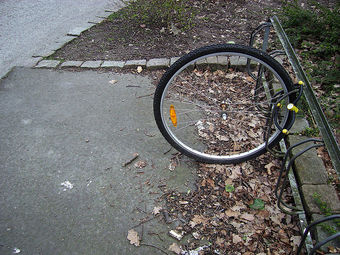
Theft
An example of theft: someone took everything except for the front wheel.
Statistics for violent crimes are accessible and available to the public. In 2004, 12% of households in the United States experienced some type of property crime, with theft being the most common. The percentage of U.S. households that experienced property crime dropped from 21% in 1994 to 12% in 2004. Moreover, from 1996 to 2005, the number of arrests in the United States for property crime has declined by 22.1%. The decline is far larger for offenders under age 18, with a decrease of 43.8% in property crime arrests, compared to a 9.5% decrease for those 18 and over. The peak age for property crime arrests in the United States is 16, compared to 18 for violent crime arrests.
7.7.7: White-Collar Crime
White-collar crime is a financially motivated, nonviolent crime committed for illegal monetary gain.
Learning Objective
Describe Edwin Sutherland’s work on white collar crime
Key Points
- White-collar crime, is similar to corporate crime, because white-collar employees are more likely to commit fraud, bribery, ponzi schemes, insider trading, embezzlement, cyber crime, copyright infringement, money laundering, identity theft, and forgery.
- The term “white-collar crime” was coined in 1939 by the sociologist Edwin Sutherland, who defined it as a “crime committed by a person of respectability and high social status in the course of his occupation”.
- White collar crimes stand in contrast to blue-collar street crimes include arson, burglary, theft, assault, rape, and vandalism.
- Corporate crime deals with the company as a whole. Their difference is that white-collar crime benefits the individual involved, and corporate crime benefits the company or the corporation.
- Insider trading, the trading of stock by someone with access to publicly unavailable information, is a type of fraud.
Key Terms
- copyright infringement
-
The unauthorized use of copyrighted material in a manner that violates one of the copyright owner’s exclusive rights, such as the right to reproduce or perform the copyrighted work, or to make derivative works that build upon it.
- insider trading
-
Buying or selling securities of a publicly-held company by a person who has privileged access to information concerning the company’s financial condition or plans.
Examples
- One well-known insider trading case in the United States is the ImClone stock trading case. In December 2001, top-level executives sold their shares in ImClone Systems, a pharmaceutical company that manufactured an anti-cancer drug. The U.S. Securities and Exchange Commission investigated numerous top-level executives, as well as Martha Stewart, a friend of ImClone’s former chief executive who had also sold her shares at the same time. The SEC reached a settlement in 2005.
- Pharmaceutical companies may make false claims regarding their drugs and factories may illegally dump toxic waste. Indeed, the Hooker Chemical Company dumped toxic waste into the abandoned Love Canal in Niagara Falls and sold the land without disclosing the dumping. It was sold in the 1950s to a private housing developer, whose residents began experiencing major health problems such as miscarriages and birth defects in the 1970s.
White-collar crime is a financially motivated, nonviolent crime committed for illegal monetary gain. White-collar crime, is similar to corporate crime, because white-collar employees are more likely to commit fraud, bribery, ponzi schemes, insider trading, embezzlement, cyber crime, copyright infringement, money laundering, identity theft, and forgery .
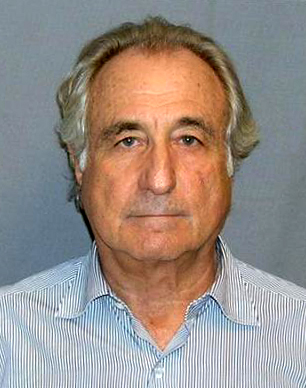
Ponzi scheme
In March 2009, the American financier Bernard Madoff pleaded guilty to 11 federal felonies and admitted to turning his wealth management business into a massive Ponzi scheme that defrauded thousands of investors of billions of dollars.
The term “white-collar crime” was coined in 1939 by Edwin Sutherland, who defined it as a “crime committed by a person of respectability and high social status in the course of his occupation” in a speech entitled “The White Collar Criminal” delivered to the American Sociological Society. Much of Sutherland’s work was to separate and define the differences in blue-collar street crimes such as arson, burglary, theft, assault, rape, and vandalism, which are often blamed on psychological, associational, and structural factors. Instead, white-collar criminals are opportunists, who learn to take advantage of their circumstances to accumulate financial gain. They are educated, intelligent, affluent, and confident individuals whose jobs involve unmonitored access to large sums of money.
Corporate crime deals with the company as a whole. The relationship that white-collar crime has with corporate crime is that they are similar because they both are involved within the business world. Their difference is that white-collar crime benefits the individual involved, and corporate crime benefits the company or the corporation. Insider trading, the trading of stock by someone with access to publicly unavailable information, is a type of fraud. One well-known insider trading case in the United States is the ImClone stock trading case. In December 2001, top-level executives sold their shares in ImClone Systems, a pharmaceutical company that manufactured an anti-cancer drug. The U.S. Securities and Exchange Commission investigated numerous top-level executives, as well as Martha Stewart, a friend of ImClone’s former chief executive who had also sold her shares at the same time. The SEC reached a settlement in 2005.
One common misconception about corporate crime is that its effects are mainly financial. For example, pharmaceutical companies may make false claims regarding their drugs and factories may illegally dump toxic waste. Indeed, the Hooker Chemical Company dumped toxic waste into the abandoned Love Canal in Niagara Falls and sold the land without disclosing the dumping. It was sold in the 1950’s to a private housing developer, whose residents began experiencing major health problems such as miscarriages and birth defects in the 1970’s.
7.7.8: Organized Crime
Organized crime refers to transnational, national, or local groupings of highly centralized enterprises run by criminals.
Learning Objective
Compare and contrast patron-client networks and bureaucratic organized crime groups
Key Points
- An organized gang or criminal set can also be referred to as a mob.
- Patron-client networks are defined by the fluid interactions they produce.
- The best known patron-client networks are the Sicilian and Italian American Cosa Nostra, most commonly known as the Sicilian Mafia.
- Bureaucratic and corporate organized crime groups are defined by the general rigidity of their internal structures.
- The term “street gang” is commonly used interchangeably with “youth gang”, referring to neighborhood or street-based youth groups that meet “gang” criteria.
Key Terms
- Street Gang
-
A group of recurrently associating individuals with identifiable leadership and internal organization, identifying with or claiming control over territory in the community, and engaging either individually or collectively in violent or other forms of illegal behavior.
- corporate crime
-
illegal acts committed by a business or corporation (a business entity having a separate legal personality from the natural persons that manage its activities) or by individuals acting on behalf of a business
- Patron-Client Networks
-
Patron-client networks are defined by the fluid interactions they produce. Organized crime groups operate as smaller units within the overall network, and as such tend towards valuing significant others, familiarity of social and economic environments, or tradition.
- Corporate Organized Crime
-
Crimes committed either by a corporation (i.e., a business entity having a separate legal personality from the natural persons that manage its activities), or by individuals acting on behalf of a corporation or other business entity (see vicarious liability and corporate liability).
Organized crime refers to transnational, national, or local groupings of highly centralized enterprises run by criminals for the purpose of engaging in illegal activity, most commonly for monetary profit. Sometimes criminal organizations force people to do business with them, as when a gang extorts money from shopkeepers for “protection.” Gangs may become “disciplined” enough to be considered “organized.” An organized gang or criminal set can also be referred to as a mob.
Patron-client networks are defined by the fluid interactions they produce. Organized crime groups operate as smaller units within the overall network, and as such tend towards valuing significant others, familiarity of social and economic environments, or tradition.
Some notable patron-client networks involve the Russian and Albanian mafias, the Japanese Yakuza, the Irish mob, and the Sicilian and Italian American Cosa Nostra (i.e. the Sicilian mafia).
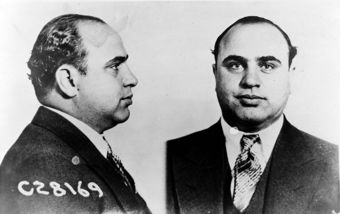
Organized Crime
Al Capone is a name often associated with organized crime.
Bureaucratic and corporate organized crime groups are defined by the general rigidity of their internal structures. Focusing more on how the operations works, succeeds, sustains itself or avoids retribution, they are generally typified by: a complex authority structure; an extensive division of labor between classes and the organization; responsibilities carried out in an impersonal manner; and top-down communication and rule enforcement mechanisms.
A distinctive gang culture underpins many, but not all, organized groups; this may develop through recruiting strategies, social learning processes in the corrective system experienced by youth, family, or peer involvement in crime, and the coercive actions of criminal authority figures. The term “street gang” is commonly used interchangeably with “youth gang”, referring to neighborhood or street-based youth groups that meet “gang” criteria.
Organized crime groups often victimize businesses through the use of extortion or theft and fraud activities like hijacking cargo trucks, robbing goods, committing bankruptcy fraud, insurance fraud, or stock fraud. Organized crime groups seek out corrupt public officials in executive, law enforcement, and judicial roles so that their activities can avoid, or at least receive early warnings about, investigation and prosecution.
7.8: Reactions to Deviance
7.8.1: Police
The police are a constituted body of persons empowered by the state to enforce the law, protect property, and limit civil disorder.
Learning Objective
Explain the relationship between the police and the state, differentiating between preventive police and police detectives
Key Points
- Preventive police wear uniforms and perform functions that require an immediate recognition of an officer’s legal authority, such as traffic control, stopping and detaining motorists, and active crime response and prevention.
- Police detectives are responsible for investigations and detective work. “Plainclothes” officers dress in attire consistent with that worn by the general public for purposes of blending in.
- Specialized units exist within many law enforcement organizations for dealing with particular types of crime, such as traffic law enforcement and crash investigation, homicide, or fraud.
- In United States constitutional law, police power is the capacity of the states to regulate behavior and enforce order within their territory for the betterment of the general welfare, morals, health, and safety of their inhabitants.
- Transnational policing pertains to all those forms for policing that, in some sense, cross national borders.
- INTERPOL is an organization facilitating international police cooperation.
Key Terms
- Specialized Units
-
Subdivisions within many law enforcement organizations for dealing with particular types of crime, such as traffic law enforcement and crash investigation, homicide, or fraud.
- INTERPOL
-
Commonly used name for the International Criminal Police Organization, an international organization facilitating police cooperation.
Example
- In the United States, concern over the power of the police has increasingly weighed upon law enforcement agencies, courts, and legislatures at every level of government since the 1960s. Incidents such as the 1965 Watts Riots and the videotaped 1991 beating by of Rodney King by Los Angeles Police officers and the riot following their acquittal, have been suggested by some as evidence that U.S. police are dangerously lacking in appropriate controls.
The police are a constituted body of persons empowered by the state to enforce the law, protect property, and limit civil disorder. Their powers include the legitimized use of force. The term police is most commonly associated with police services of a state that are authorized to exercise the police power of that state within a defined legal or territorial area of responsibility. Police forces are often defined as being separate from military or other organizations involved in the defense of the state against foreign aggressors; however, gendarmerie and military police are military units charged with civil policing.
Preventive Police and Police Detectives
In most Western police forces, perhaps the most significant division is between preventive police and detectives. Terminology varies from country to country. Preventive police designates the police that patrol and respond to emergencies and other incidents, as opposed to detective services. As the name “uniformed” suggests, preventive police wear uniforms and perform functions that require an immediate recognition of an officer’s legal authority, such as traffic control, stopping and detaining motorists, and more active crime response and prevention. On the other hand, police detectives are responsible for investigations and detective work. Detectives, in contrast to uniform police, typically wear ‘business attire’ in bureaucratic and investigative functions where a uniformed presence would be either a distraction or intimidating. “Plainclothes” officers dress in attire consistent with that worn by the general public for purposes of blending in, but a need to establish police authority still exists.
Specialized units exist within many law enforcement organizations for dealing with particular types of crime, such as traffic law enforcement and crash investigation, homicide, or fraud. In counter insurgency type campaigns, select and specially trained units of police armed and equipped as light infantry have been designated as police field forces. They perform paramilitary type patrols and ambushes whilst retaining their police powers in areas that were highly dangerous.
Police in the United States
In United States constitutional law, police power is defined as the capacity of the states to regulate behavior and enforce order within their territory for the betterment of the general welfare, morals, health, and safety of their inhabitants. Police power can be exercised in the form of making laws and compelling obedience to those laws through legal sanctions, physical means, or other forms of coercion and inducements. In the United States, concern over such issues has increasingly weighed upon law enforcement agencies, courts, and legislatures at every level of government since the 1960s. Incidents such as the 1965 Watts Riots and the videotaped 1991 beating of Rodney King by Los Angeles Police officers and the riot following their acquittal have been suggested by some as evidence that U.S. police are dangerously lacking in appropriate controls.
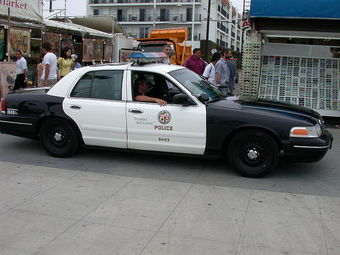
Police
The Los Angeles Police Department (LAPD) has been heavily fictionalized in numerous movies and television shows throughout its history. The department has also been involved in a number of controversies, mostly involving racial animosity and police corruption.
Transnational Police
The term transnational policing entered into use in the mid-1990s as a description for forms of policing that transcended the boundaries of the sovereign nation state. Transnational policing pertains to all those forms for policing that, in some sense, transgress national borders. This includes a variety of practices, but cross-border police cooperation, criminal intelligence exchange between police agencies working in different nation-states, and police development-aid to weak, failed, or failing states are the three types that have received the most scholarly attention. The International Criminal Police Organization (ICPO), widely known as INTERPOL, is an organization facilitating international police cooperation. It was established as the International Criminal Police Commission (ICPC) in 1923 and adopted its telegraphic address as its common name in 1956.
7.8.2: Courts
A court is a form of tribunal with the authority to adjudicate legal disputes between parties, and carry out the administration of justice.
Learning Objective
Describe the three levels of the court system
Key Points
- In both common law and civil law legal systems, courts are the central means for dispute resolution. Generally, all persons have an ability to bring their claims before a court.
- Jurisdiction refers to the court’s practical authority to decide cases. There are two types of jurisdiction. The first is personal jurisdiction: the court’s jurisdiction over the parties to a lawsuit.
- Secondly, subject-matter jurisdiction is the authority of a court to hear cases of a particular type or cases relating to a specific subject matter.
- There are three levels of courts. Trial courts initially hear cases and review evidence and testimony to determine the facts of the case. Appellate courts hear an appeal of a trial court or other lower tribunal. The Supreme Court primarily reviews the decisions of the intermediate courts.
- A tribunal in the general sense is any person or institution with the authority to judge, adjudicate, or determine claims or disputes.
- The Supreme Court primarily reviews the decisions of the intermediate courts.
- A tribunal in the general sense is any person or institution with the authority to judge, adjudicate, or determine claims or disputes.
Key Terms
- common law
-
Law developed by judges through decisions of courts and similar tribunals (also called case law), as distinguished from legislative statutes or regulations promulgated by the executive branch.
- civil law
-
The body of law dealing with the private relations between members of a community; it contrasts with criminal law, military law, and ecclesiastical law.
- tribunal
-
Any person or institution with the authority to judge, adjudicate, or determine claims or disputes.
Examples
- The Nuremberg Trials were a series of military tribunals, held by the victorious allied forces of World War II, most notable for the prosecution of prominent members of the political, military, and economic leadership of the defeated Nazi Germany.
- Subject-matter jurisdiction is the authority of a court to hear cases of a particular type or cases relating to a specific subject matter. For instance, bankruptcy court only has the authority to hear bankruptcy cases.
What is a Court?
A court is a form of tribunal, often a governmental institution, with the authority to adjudicate legal disputes between parties, and carry out the administration of justice in civil, criminal, and administrative matters in accordance with the rule of law. In both common law and civil law legal systems, courts are the central means for dispute resolution, and it is generally understood that all persons have an ability to bring their claims before a court. Similarly, the rights of those accused of a crime include the right to present a defense before a court.
The system of courts that interpret and apply the law are collectively known as the judiciary. The place where a court sits is known as a venue. The room where court proceedings occur is known as a courtroom, and the building is known as a courthouse; court facilities range from simple and very small facilities in rural communities, to large buildings in cities. A judge is a person who presides over court proceedings, either alone or as part of a panel of judges.
Jurisdiction
The practical authority given to the court is known as its jurisdiction, or the court’s power to decide certain kinds of questions or petitions. A plaintiff is the term used in some jurisdictions for the party who initiates a civil lawsuit before a court. A defendant is any party required to answer a plaintiff’s complaint in a civil lawsuit, or any party that has been formally charged or accused of violating a criminal statute. A legal remedy is the means with which a court of law (usually in the exercise of civil law jurisdiction) enforces a right, imposes a penalty, or makes some other court order to impose its will.
In the United States, the legal authority of a court to take action is based on personal jurisdiction, subject-matter jurisdiction, and venue over the parties to the litigation. Personal jurisdiction refers to a court’s jurisdiction over the parties to a lawsuit. Personal jurisdiction means the power of the court to decide a dispute, as against a particular person. Subject-matter jurisdiction is the authority of a court to hear cases of a particular type, or cases relating to a specific subject matter. For instance, bankruptcy court only has the authority to hear bankruptcy cases.
Types of Courts
In most jurisdictions, the court system is divided into at least three levels: the trial court, which initially hears cases and reviews evidence and testimony to determine the facts of the case; at least one intermediate appellate court that hears an appeal of a trial court or other lower tribunal; and a supreme court, which primarily reviews the decisions of the intermediate courts. A tribunal, in the general sense, is any person or institution with the authority to judge, adjudicate on, or determine claims or disputes, whether or not it is called a tribunal in its title. For example, the Nuremberg Trials were a series of military tribunals, held by the victorious allied forces of World War II, most notable for the prosecution of prominent members of the political, military, and economic leadership of the defeated Nazi Germany.
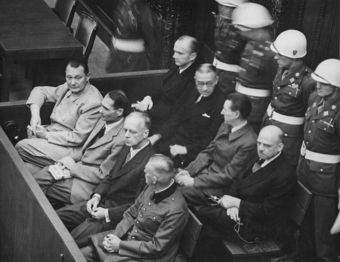
Nuremberg Tribunal
At the Nuremberg Tribunals, the main target of the prosecution was Hermann Göring (at the left edge on the first row of benches), considered to be the most important surviving official in the Third Reich after Hitler’s death.
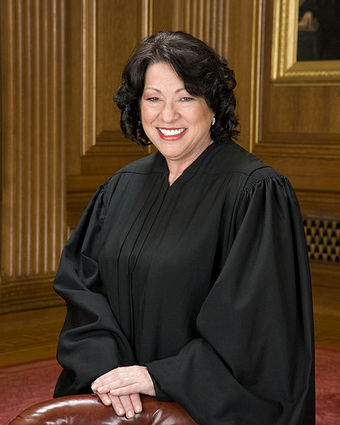
U.S. Supreme Court Justice Sonia Sotomayor
United States Supreme Court Associate Justice Sonia Sotomayor
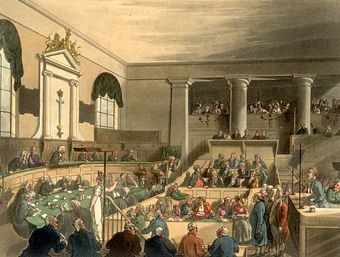
The Old Bailey
A trial at the Old Bailey in London, as drawn by Thomas Rowlandson and Augustus Pugin, for Ackermann’s Microcosm of London (1808-11).
7.8.3: Prisons
A prison is a place in which people are physically confined and, usually, deprived of a range of personal freedoms.
Learning Objective
Analyze recent developments in the rate of incarceration in the U.S.
Key Points
- Imprisonment is a legal penalty that may be imposed by the state for the commission of a crime.
- The modern prison system was born in London, influenced by the utilitarianism of Jeremy Bentham.
- In the U.S., jails are county or city administrated institutions, which house both inmates awaiting trial on the local level, and convicted misdemeanants serving a term of one year or less.
- Supermax prisons provide long term, segregated housing for inmates classified as the highest security risks in the prison system.
- The United States has the highest documented incarceration rate in the world (743 per 100,000 population).
Key Terms
- Jeremy Bentham
-
An English founder of utilitarianism who was influential in designing the first modern prisons.
- Supermax Prisons
-
Prisons that provide long term, segregated housing for inmates classified as the highest security risks in the prison system.
Examples
- According to the U.S. Bureau of Justice Statistics (BJS) 2,266,800 adults were incarcerated in U.S. federal and state prisons, and county jails at year-end 2010 — about 0.7% of adults in the U.S. resident population. Additionally, 4,933,667 adults at year-end 2009 were on probation or on parole. In total, 7,225,800 adults were under correctional supervision (probation, parole, jail, or prison) in 2009 — about 3.1% of adults in the U.S. resident population.
- According to the US Bureau of Justice Statistics (BJS) non-Hispanic blacks accounted for 39.4% of the total prison and jail population in 2009. According to the 2010 census of the US Census Bureau blacks (including Hispanic blacks) comprised 13.6% of the US population. Hispanics (of all races) were 20.6% of the total jail and prison population in 2009. Hispanics comprised 16.3% of the US population according to the 2010 US census.
A prison is a place in which people are physically confined and, usually, deprived of a range of personal freedoms. Imprisonment is a legal penalty that may be imposed by the state for the commission of a crime. For most of history, imprisoning has not been a punishment in itself, but rather a way to confine criminals until corporal or capital punishment was administered. Only in the 19th century, beginning in Britain, did prisons as they are known today become commonplace. The modern prison system was born in London, influenced by the utilitarianism of Jeremy Bentham.
Prison Design
Prisons are normally surrounded by fencing, walls, earthworks, geographical features, or other barriers to prevent escape. Multiple barriers, concertina wire, electrified fencing, secured and defensible main gates, armed guard towers, lighting, motion sensors, dogs and roving patrols may all also be present, depending on the level of security.

Prison
Barbed wire is a feature of prisons.
Modern prison designs have sought to increasingly restrict and control the movement of prisoners throughout the facility, while permitting a maximal degree of direct monitoring by a smaller prison staff. As compared to traditional large landing-cellblock designs, which were inherited from the 19th century and which permitted only intermittent observation of prisoners, many newer prisons are designed in a decentralized “popular” layout.
Incarceration in the United States
In the United States, “jail” and “prison” refer to separate levels of incarceration; generally speaking, jails are county or city administrated institutions which house both inmates awaiting trial on the local level, and convicted misdemeanants serving a term of one year or less, while prisons are state or federal facilities housing convicted felons serving a term of more than one year. Supermax prisons provide long term, segregated housing for inmates classified as the highest security risks in the prison system—the “worst of the worst” criminals, and those who pose a threat to national and international security.
The United States has the highest documented incarceration rate in the world (743 per 100,000 population). Incarceration rate in the U.S. for federal and state prisons in 2007 was the highest in history of the country. It was 5.5 times greater than the sharp peak that occurred during the Great Depression at 137 per 100,000 in 1939. According to the U.S. Bureau of Justice Statistics (BJS), 2,266,800 adults were incarcerated in U.S. count jails and federal and state prisons at yearend 2010; this represents about 0.7% of adults in the U.S. resident population. Additionally, 4,933,667 adults at yearend 2009 were on probation or on parole. In total, 7,225,800 adults were under correctional supervision (probation, parole, jail, or prison) in 2009, representing about 3.1% of adults in the U.S. resident population.
According to the U.S. Bureau of Justice Statistics (BJS), non-Hispanic blacks accounted for 39.4% of the total prison and jail population in 2009. According to the 2010 census of the U.S. Census Bureau, blacks (including Hispanic blacks) comprised 13.6% of the US population. Hispanics (of all races) were 20.6% of the total jail and prison population in 2009. Hispanics comprised 16.3% of the U.S. population according to the 2010 U.S. census.
7.8.4: The Death Penalty
Capital punishment is a legal process whereby a person is put to death by the state as a punishment for a crime.
Learning Objective
Evaluate arguments for and against the death penalty
Key Points
- Crimes that can result in a death penalty are known as capital crimes or capital offences.
- Supporters of the death penalty argue that the death penalty is morally justified when applied to murder cases, especially cases with aggravating elements, such as multiple homicide, child murder, torture murder and mass killing including terrorism or genocide.
- Capital punishment is often opposed on the grounds that innocent people will inevitably be executed.
- Abolitionists believe capital punishment is the worst violation of human rights.
Key Terms
- capital punishment
-
Punishment by death.
- capital crime
-
A crime that is punishable by death.
- insubordination
-
The quality of being insubordinate; disobedience to lawful authority.
Example
- Capital punishment is often opposed on the grounds that innocent people will inevitably be executed. Between 1973 and 2005, 123 people in 25 states were released from death row when new evidence of their innocence emerged
What Is Capital Punishment?
Capital punishment is a legal process whereby a person is put to death by the state as a punishment for a crime. Crimes that can result in a death penalty are known as “capital crimes” or “capital offenses. ” Capital punishment has in the past been practiced by most societies. Currently, only 58 nations actively practice it, and 97 countries have abolished it. Although many nations have abolished capital punishment, over 60% of the world’s population live in countries where executions take place–the People’s Republic of China, India, the United States, and Indonesia–the four most-populous countries in the world, that continue to apply the death penalty.
Execution of criminals and political opponents has been used by nearly all societies–both to punish crime and to suppress political dissent. In most places that practice capital punishment, it is reserved for murder, espionage, treason, or as part of military justice. In some countries sexual crimes, such as rape, adultery, incest, and sodomy, carry the death penalty, as do religious crimes, such as apostasy in Islamic nations. In many countries that use the death penalty, drug trafficking is also a capital offense. In China, human trafficking and serious cases of corruption are punished by the death penalty. In militaries around the world courts, martial have imposed death sentences for offenses, such as cowardice, desertion, insubordination, and mutiny.
Arguments For and Against
Supporters of the death penalty argue that the death penalty is morally justified when applied in murder, especially with aggravating elements, such as multiple homicide, child murder, torture murder, and mass killing including terrorism or genocide. Some even argue that not applying the death penalty in latter cases are patently unjust. Supporters of the death penalty, especially those who do not believe in the deterrent effect of the death penalty, say the threat of the death penalty could be used to urge capital defendants to plead guilty, testify against accomplices, or disclose the location of the victim’s body.
Capital punishment is often opposed on the grounds that innocent people will inevitably be executed. Between 1973 and 2005, 123 people in 25 states were released from death row when new evidence of their innocence emerged. Abolitionists believe capital punishment is the worst violation of human rights, because the right to life is the most important, and judicial execution violates it without necessity and inflicts to the condemned to a psychological torture. In addition, opponents of the death penalty use the argument that executing a criminal costs more than life imprisonment does. Many states have found it cheaper to sentence criminals to life in prison than to go through the time-consuming and bureaucratic process of executing a convicted criminal.
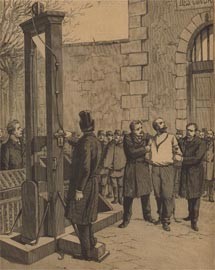
Capital Punishment
Anarchist Auguste Vaillant guillotined in France in 1894.
